
More than 200,000


More than 200,000
By Laura Sturza
When a beautiful, fluffy calico cat named Lucy was 12 years old, her family gave her up. Lucy was sick, and they couldn’t afford her medical care, according to Maddie Lederer, an adoption counselor at the Montgomery County Animal Services and Adoption Center in Derwood, Maryland.
“We looked at her records and saw she had a history of bladder stones,” Lederer said. “We were able to treat her and put her on prescription diet food, so she hopefully wouldn’t have a recurrence.”
Lucy quickly became a favorite among staff and volunteers, who described her as a “purring machine” and a “professional loafer with a cute face.” Despite those endearing qualities, though, Lucy was overlooked by prospective adoptive families because of her age and medical condition.
That was until an older man walked into the shelter and said he was looking for a senior cat. He had previous experience with pets that needed medical attention, so that wasn’t a concern for him.
“I knew Lucy was the cat,” Lederer said. “Not to be cheesy, but it was love at first sight. He didn’t want to meet any other cat. He said that as a senior, he just wanted to have a senior buddy around with him.”
Older pets common in shelters
Lucy wasn’t the only pet to have been surrendered to a shelter in her later years. Unfortunately, it happens at shelters across the DMV.
“Sometimes the owner has passed away, and there’s no one related who is able or willing to take on the animal,” said Maria Anselmo, community relations manager at the Montgomery County shelter, adding that it may be due to financial constraints or a landlord issue.


The Faroe Islands blend grandeur with serenity; plus, Madrid’s lively streets and museums awaken the senses page 26

A long-distance move can also cause a pet owner to reluctantly give up their pet to a shelter. Long trips can be especially stressful for older pets, according to Frankie Kachur, communications assistant at the Fairfax County Animal Shelter in Lorton, Virginia. “One family was very torn up [when they surrendered their
pet], but they were flying to Australia.”
Of course, pets are stressed by surrender too. While shelter staff and volunteers strive to make pets as comfortable as possible, animals suddenly find themselves in cages, surrounded by other animals and



















In celebration of National Alzheimer’s Awareness Month, The Carnegie at Washingtonian Center is shining a light on its commitment to compassionate senior care through its Assisted Living and Memory Care neighborhoods. Designed with dignity, connection, and purpose at their core, these thoughtfully crafted residences offer a secure and enriching environment for older adults, whether they’re navigating memory loss or seeking supportive daily living.
“Rooted in human-centered insights, our approach fosters empathy, builds authentic connections, and honors the dignity of every individual,” says Salome Atapagrem, assistant general manager overseeing Assisted Living and Memory Care at The Carnegie. “We strive to create a space where every member feels seen, valued, and supported, whether they need help with daily tasks or are living with cognitive changes. Everything we offer is designed to honor each individual’s choices and create meaningful engagement that goes beyond the boundaries of diagnosis.”
Assisted Living That Feels Like Home
At The Carnegie, Assisted Living is designed to help members maintain their independence while enjoying the peace of mind that comes from knowing support is always nearby. Every service is tailored to individual needs, so each member can focus on living life fully, with comfort, connection, and confidence. Members enjoy private residences , delicious chefprepared meals, and a lively calendar full of wellness activities and social events. From morning stretch classes to art workshops and outings around town, there’s always something to look forward to and plenty of ways to stay connected and engaged.

g That
Mealtimes at The Carnegie are all about comfort, dignity, and enjoyment. Members choose from beautifully plated entrées served at thoughtfully arranged tables that offer familiar cues and a sense of ease. Our culinary team brings warmth and routine to each meal, helping boost appetite and create a welcoming atmosphere. For those with special dietary needs, our chefs prepare fresh, flavorful dishes with modified textures, so nutrition is never a trade-off for taste or the pleasure of dining well.


For individuals living with Alzheimer’s or other forms of cognitive changes, The Carnegie’s Memory Care neighborhood offers a secure, engaging environment with 24/7 support. Specially trained caregivers use evidence-based approaches to foster meaningful interactions and enhance quality of life. Programming is proactive and consistent, with enriching activities offered morning through evening to help reduce confusion and anxiety.
The Carnegie’s memory care philosophy is supported by Kisco Senior Living’s Heirloom program, a research-based approach that celebrates each member’s life story and strengths. Associates are trained to meet members where they are, creating moments of joy, comfort, and connection that transcend diagnosis.
At The Carnegie, our Heirloom-trained team goes through hands-on training and powerful experiences like the Virtual Dementia Tour to better understand what it’s like to live with memory loss. In fact, our
Memory Care leaders are certified facilitators and host these tours every month for family members. It’s a chance to step into a loved one’s world, build empathy, and learn how to support them in meaningful ways. We also use Montessori-based approaches every day, tailoring activities to each member’s unique interests and strengths.
What truly sets The Carnegie apart is its commitment to continuity. Members can remain in the community they love — even as their physical or cognitive needs change — surrounded by familiar faces and supported by a trusted team. Families find peace of mind knowing their loved ones are safe, engaged, and cared for with empathy and expertise.
We invite you to join us at The Carnegie during Alzheimer’s Awareness Month to discover a community where care is more than support — it’s connection, purpose, and belonging. At The Carnegie, every member’s story is honored, every day brings connection, and every moment is met with care. Learn more at lifeatthecarnegie.com or call 240-339-6769.








When I’ve had the privilege of watching my toddler grandson as he learned to walk, run and play, I noticed something striking: As he gained experience in the world, he grew more confident in some ways and more cautious in others. And in both things, he often took his cues — about how to feel and how to respond — from his parents and other caregivers.
Taking his first steps, he was awkward and fell repeatedly. But he would quickly get up and try again. If he happened to bump his head or land on his hand, he would often look up anxiously to see the reaction of nearby adults.
he’d be back on the prowl.
On the other hand, there are some things he’s grown surprisingly afraid of. He used to love going down slides at nearby parks. On his butt, on his stomach, on his side.

By Stuart P. Rosenthal
If they were smiling and nodding as if to say, “Yep, that’s how we learn,” he would smile, get up and walk some more. But if an adult nearby happened to look alarmed or concerned, he would start to pout and cry.
He also learned the value of a placebo. When he seemed to feel some pain from a minor fall or bump, rubbing a spot or whimpering, we would ask if he wanted an ice pack and he would often nod vigorously.
He usually waited patiently (and silently) while we went to get it, then he’d perfunctorily touch the ice pack to the spot he hit, which was now magically healed, and
But something must have happened that I didn’t witness, because for the last couple of months he’ll do anything else at the park except go down a slide!
With some work, I’ve gotten him to slide down sitting on my lap, which he enjoys immensely. But he still won’t slide solo. I’m sure he’ll get back to it when he decides the time is right for him.
Of course, I have also learned from (often painful) experience over the years to be more careful. Two tumbles in particular stand out for me. Once, I tripped over some rocks at a public park when I thought I heard one of my children calling for me.
Another time, I landed hard on an asphalt parking lot when my foot caught on a concrete car stop that had been pushed out of place. In both cases, my recovery took some weeks (and stitches).
Both reminded me of sound advice from childhood: Watch where you are going, and don’t make any rash moves! Taking a
little more time can avoid a lot of agony.
Looking at folks who work out at my gym, I see a number of older men and women working hard to stay fit and truly maintaining some impressive strength.
But many of them nonetheless walk hunched over and shuffle between the machines. I assume it’s a habit born out of earlier falls, fading eyesight or both. I’m hoping to avoid a similar gait by noticing it in others and trying to stay upright even if I walk more slowly than I used to.
Sometimes, however, I’m still the speedy walker I once was, and from that I learned yet another lesson about fear. I was heading into the supermarket the other day to pick up a head of lettuce. I hoped to make it a quick errand and get back to work.
I found myself entering the store behind a frail older gentleman moving very slowly with a rollator through the main doors. There was no getting around him as we went through the crowded entry vestibule and by some narrow fruit displays, and I was getting antsy.
Finally, I saw my opportunity to break to
his right as the cantaloupe display ended, and I quickly slipped past him — without touching him or his rollator — toward my destination.
After a quick beat, I heard him yelling quite loudly after me: “Don’t scare me like that! I’m an old man!” I quietly apologized from a distance as I reached for the lettuce.
Of course, I felt terrible. I didn’t mean to scare him. It made me wonder what he had experienced that made him perceive a rush of motion behind him as disorienting and even frightening.
It made me a bit fearful, too: of possibly becoming so frail one day that I might feel the same way. I guess it depends on what I learn to be fearful of as I continue to move through life.
If you have thoughts on the topic of learned fear or would like to share lessons you’ve learned, please send us a letter to the editor via mail, email or our website. In the meantime, stay safe!


IN FOCUS FOR PEOPLE OVER 50
The Beacon is a monthly newspaper dedicated to inform, serve, and entertain the citizens of the Greater Washington DC area, and is privately owned. Other editions serve Greater Baltimore and Howard County, Md.
Subscriptions are available via first-class mail ($50) or third-class mail ($20), prepaid with order. D.C. and Maryland residents: add 6 percent for sales tax. Send subscription order to the office listed below.
Publication of advertising contained herein does not necessarily constitute endorsement. Signed columns represent the opinions of the writers, and not necessarily the opinion of the publisher.
Publisher/Editor Emeritus – Stuart P. Rosenthal
President/Associate Publisher – Judith K. Rosenthal
Executive Vice President – Gordon Hasenei
Editor – Margaret Foster
Art Director – Kyle Gregory
Vice President of Operations – Roger King
Advertising Representatives
Jill Joseph, Steve Levin, M.K. Phillips, Alan Spiegel
Assistant Editor – Ana Preger Hart
Editorial Assistant – Tori Cleveland



The Beacon, P.O. Box 2227, Silver Spring, MD 20915 (301) 949-9766 • Email: info@thebeaconnewspapers.com Website: www.theBeaconNewspapers.com
Submissions: The Beacon welcomes
Newspapers, Inc.
Readers are encouraged to share their opinions on any matter addressed in the Beacon as well as on political and social issues of the day. Mail your Letter to the Editor to The Beacon, P.O. Box 2227, Silver Spring, MD 20915, or email to info@thebeaconnewspapers.com. Please include your name, address and telephone number for verification.
Dear Editor:
Thank you for an excellent article on how Alzheimer’s disease and dementia affect pilots’ behavior and other folks’ behavior (“Do we really want to know?” October 2025). I don’t see any columnists writing about this. You addressed an important topic.
Jo Ann West Via email
Dear Editor:
I am a regular reader of your newspaper and enjoy reading every issue from front to back. Articles are very informative and useful, and your newspaper is providing a great service to seniors.
My favorite part is reflections from the publisher on the back of the front page. However, I am disappointed to read your reflections this month where you started describing what happened to the Air India flight.
I have not read any official reports where it is stated that the pilot deliberately cut off the fuel to the engine. The cause of the crash is still under investigation, and I find it very inappropriate for you to state this as a fact and build your reflections around. Such a statement may lead readers to form the wrong impression of an airline. Your reflections are still valuable, but I hope in future you use factual and officially validated information.
Pankaj C. Patel Laurel, MD
From the publisher: Thank you for your comments. We certainly did not mean to single out any airline for criticism or blame. On the contrary, the whole point of the column was to show how people with depression often hide their condition. We need to encourage such people to get the help they need.
You are correct that the investigation of the crash continues. On July 12, the Washington Post quoted India’s Aircraft Accident Investigation Bureau repeating a conversation between the pilots from the cockpit flight recorder. That was the source of our statement that one pilot asked the other why he cut off the fuel switches.
Dear Editor:
In response to the article by Dr. Robert Shmerling, “Is your breakfast cereal actually healthy?” (October 2025), I have the following suggestion for readers.
Anyone needing a high fiber intake for regularity who dislikes taking fiber supplements will find few breakfast cereals with adequate fiber. Choices are especially lacking for hot cereals, which I prefer in winter.
I create my own high-fiber hot cereal by placing one-third cup of oatmeal in a bowl, adding half a cup of Kellogg’s All-Bran dry cereal and one-and-a-third cups of water. Raisins and cinnamon are optional. I microwave for two minutes and enjoy a tasty, high-fiber (about 20 grams) meal.
Richard Gillum Silver Spring, Maryland
Certain foods, like lean protein and leafy greens, are better for digestion
Tai chi has more health benefits than any other exercise, especially as we age HABITS FOR LIFE
To stay healthy, prioritize sleep, lower stress, avoid junk food and everyday toxins HEART RISK
Don’t take over-the-counter laxatives every day; they can harm your heart
By Christina Larson
Nurse Rod Salaysay works with all kinds of instruments in the hospital: a thermometer, a stethoscope and sometimes a guitar or ukulele.
In the recovery unit of UC San Diego Health, Salaysay helps patients manage pain after surgery. Along with medications, he offers tunes on request and sometimes sings. His repertoire ranges from folk songs in English and Spanish to Minuet in G Major and movie favorites like “Somewhere Over the Rainbow.”
Patients often smile or nod along. Salaysay even sees changes in their vital signs like lower heart rate and blood pressure, and some request fewer painkillers.
“There’s often a cycle of worry, pain, anxiety in a hospital,” he said, “but you can help break that cycle with music.”
Over the past two decades, live performances and recorded music have flowed into hospitals and doctors’ offices as research grows on how songs can help ease pain.
The healing power of song may sound intuitive given music’s deep roots in human culture. But the science of whether and how music dulls acute and chronic pain — technically called music-induced analgesia — is just catching up.
No one suggests that a catchy song can fully eliminate serious pain. But several re-
cent studies, including in the journals Pain and Scientific Reports, have suggested that listening to music can either reduce the perception of pain or enhance a person’s ability to tolerate it.
What seems to matter most is that patients — or their families — make the music selections themselves and listen intently, not just as background noise.
Two people with the same condition or injury may feel vastly different levels of acute or chronic pain. Or the same person might experience pain differently from one day to the next.
“Pain is a really complex experience,” said Adam Hanley, a psychologist at Florida State University. “It’s created by a physical sensation, and by our thoughts about that sensation and emotional reaction to it.”
Acute pain is felt when pain receptors in a specific part of the body — like a hand on a hot stove — send signals to the brain, which processes the short-term pain.
Chronic pain usually involves long-term structural or other changes to the brain, which heighten overall sensitivity to pain signals. Researchers are still investigating how this occurs.
“Pain is interpreted and translated by the brain,” which may ratchet the signal up or down, said Dr. Gilbert Chandler, a specialist in chronic spinal pain at the Talla-
hassee Orthopedic Clinic.
Researchers know music can draw attention away from pain, lessening the sensation. But studies also suggest that listening to preferred music helps dull pain more than listening to podcasts.
“Music is a distractor. It draws your focus away from the pain. But it’s doing more than that,” said Caroline Palmer, a psychologist at McGill University who studies music and pain.
Scientists are still tracing the various neural pathways at work, said Palmer.
“We know that almost all of the brain becomes active when we engage in music,” said Kate Richards Geller, a registered music therapist in Los Angeles. “That changes the perception and experience of pain — and the isolation and anxiety of pain.”
Music genres and active listening
The idea of using recorded music to lessen pain associated with dental surgery began in the late 19th century, before local anesthetics were available. Today researchers are studying what conditions make music most effective.
Researchers at Erasmus University Rotterdam in the Netherlands conducted a study on 548 participants to see how listening to five genres of music — classical, rock, pop, urban and electronic — extended their ability to withstand acute pain, as measured by exposure to very cold temperatures.
All music helped, but there was no single winning genre.
“The more people listened to a favorite genre, the more they could endure pain,” said co-author Dr. Emy van der Valk Bouman. “A lot of people thought that classical music would help them more. Actually, we are finding more evidence that what’s best is just the music you like.”
The exact reasons are still unclear, but it may be because familiar songs activate more memories and emotions, she said.
Active, focused listening also seems to matter.
Hanley, the Florida State psychologist, co-authored a preliminary study suggesting daily attentive listening might reduce chronic pain.
“Music has a way of lighting up different parts of the brain,” he said, “so you’re giving people this positive emotional bump that takes their mind away from the pain.”
It’s a simple prescription with no side effects, some doctors now say.
Cecily Gardner, a jazz singer in Culver City, California, said she used music to help get through a serious illness and has sung to friends battling pain.
“Music reduces stress, fosters community,” she said, “and just transports you to a better place.”
© 2025 The Associated Press. All rights reserved.
By Francesca Coltrera
Not such good news for butter lovers like me: Seesawing research on the health risks of butter received a firm push from a recent Harvard study published in JAMA Internal Medicine. Drawing on decades of data gathered through long-term observational studies, the researchers investigated whether butter and plant oils affect mortality.
One basic takeaway? “A higher intake of butter increases mortality risk, while a higher intake of plant-based oil will lower it,” said Yu Zhang, lead author of the study. As it turns out, choosing to substitute certain plant oils for butter might help people live longer.
What did the study find?
The researchers divided participants into four groups based on how much butter and plant oils they reported using on dietary questionnaires. They compared deaths among those consuming the highest amounts of butter or plant oils with those consuming the least, over a period of up to 33 years.
Plant oils won out handily. A 15% higher risk of death was seen among those who ate the most butter compared with those who ate the least. A 16% lower risk of death was seen among those who consumed the highest amount of plant oils compared with those who consumed the least.
Higher butter intake also raised risk for
cancer deaths. And higher plant oil intake cut the risk for dying from cancer or cardiovascular disease like stroke or heart attack.
While the study looked at five plant oils, only soybean, canola and olive oil were linked with survival benefits. Swapping out a small amount of butter in the daily diet — about 10 grams, which is slightly less than a tablespoon — for an equivalent amount of those plant-based oils was linked with fewer total deaths and fewer cancer deaths, according to a modeling analysis.
How could less butter improve health?
“Butter has almost no essential fatty acids and a modest amount of trans fat —
the worst type of fat for cardiovascular disease,” Dr. Walter C. Willett, professor of epidemiology and nutrition at the Harvard T.H. Chan School of Public Health and professor of medicine at Harvard Medical School, noted by email.
By contrast, the plant oils highlighted in this study are rich in antioxidants, essential fatty acids and unsaturated fats, which research has linked to healthier levels of cholesterol and triglycerides and lower insulin resistance.
Especially when substituted for a saturated fat like butter, plant oils also may help lower chronic inflammation within



By Ria Bhagwat
At the end of the day, your long-awaited dinner is probably the only priority you’re focused on. You might scarf down a cheesy bowl of pasta or grab a fast-food sandwich.
But when you’re done with dinner, your body is just getting started on digestion. Those who haven’t digested their food typically go to bed feeling full, and that can affect our physical and emotional well-being.
“When we don’t properly digest our food because we’ve eaten too much or we’re too stressed, it can lead to disrupted sleep patterns and discomfort throughout the night, impacting our ability to wake up feeling re-
From page 5
the body. Making such substitutions aligns with American Heart Association recommendations and current Dietary Guidelines for Americans for healthful eating that lower risk for chronic disease.
And for the butter lovers? “A little butter occasionally for its flavor would not be a problem,” Dr. Willett said. “But for better health, use liquid plant oils whenever possible instead of butter for cooking and at the table.”
Try sampling a variety of plant oils, like different olive oils, mustard oil or sesame oil, to learn which ones you enjoy for different purposes, he suggests. Additionally, a blend or mix of butter with oils — or sometimes a bit of butter on its own — can satisfy taste buds.
Study limitations and strengths
The study crunched data collected
freshed and energized in the morning,” said certified nutritionist Elyse Wagner, a functional medicine and nutrition expert.
That has an impact on our body, mind and mood. You’re not just sacrificing your physical comfort; you’re also neglecting your mental health.
If that sounds a bit too familiar, consider adding a few of these healthy foods to your last meal of the day.
1. Lean protein: Lean proteins — like salmon, eggs, beans and nuts — are packed with nutrients and low-fat content
See DIGESTION , page 9
through a questionnaire answered every four years by more than 221,000 adults participating in the Nurses’ Health Study, Nurses’ Health Study II and Health Professionals Follow-Up Study.
As is true of all observational studies, this type of research can’t prove cause and effect, although it adds to the body of evidence. Because most participants were white healthcare professionals, the findings may not apply to a wider population.
The researchers adjusted for many variables that can affect health, including age, physical activity, smoking status and family history of illnesses like cancer and diabetes. What makes the study strong are the size of the study, the length of follow-up and multiple adjustments like these.
Francesca Coltrera is the editor of the Harvard Health Blog.
© 2025 Harvard University. Distributed by Tribune Content Agency, LLC.

For free materials about area housing communities, just complete and clip this coupon and mail, or take a picture and email, to the Beacon.
District of Columbia
o Asbury Dwellings (See ad on page 7)
o Chevy Chase House (See ad on page 8)
o Brooke Grove (See ad on page 13)
o Carnegie at Washingtonian Center (See ads on pages 2, 3)
o ChurchillSeniorLiving (See ad on page 9)
o Collington (See ad on page 15)
o Grandview,The/Erickson (See ad on page 6)
o Hibiscus House (See ad on page 28)
o Hill House at Beechfield (See ad on page 17)
o Homecrest House (See ad on page 17)
o Park View Bladensburg (See ad on page 35)
o Park View Columbia (See ad on page 35)
o Park View Emerson (See ad on page 35)
o Park View Laurel (See ad on page 35)
o Riderwood/Erickson (See ad on page 6)
Virginia
o Ashby Ponds/Erickson (See ad on page 6)
o Benchmark at Alexandria (See ad on page 1)
o Culpepper Gardens (See ad on page 11)
o Falcons Landing (See ad on page 40)
o Greenspring/Erickson (See ad on page 6)
o WoodleighChase/Erickson (See ad on page 6)
Check the boxes you’re interested in and return this form to: The Beacon, P.O. Box 2227, Silver Spring, MD 20915 or take a picture and email to housing@thebeaconnewspapers.com.
By Howard LeWine, M.D.
Q: I have osteoarthritis in both knees. The left knee is especially painful and stiff. When should a person consider getting knee injections?
A: People can often manage the pain and improve mobility with lifestyle changes, such as weight loss, physical therapy, and exercises focusing on joint movement and strengthening leg muscles.
Taking occasional over-the-counter or prescription pain relievers or anti-inflammatory medicines also can help. These can be taken in pill form or topically (applied to the skin).
But if these strategies don’t offer sufficient relief, or if symptoms impede your ability to move freely, an injection can provide immediate pain relief, reduce inflammation and increase mobility.
But not everyone improves, and even if they are helpful, injections are a temporary treatment that won’t cure your knee osteoarthritis or change its course.
If you must rely on repeated injections for pain management and help with mobility, then it’s probably time to consider a knee replacement.
There are two main types of injections for knee osteoarthritis: corticosteroids and hyaluronic acid.
Corticosteroid injections (also known as
steroid shots) contain a manufactured drug that resembles cortisol, a hormone the adrenal glands produce. They reduce inflammation, pain and swelling in and around the knee joint. If the knee is swollen, your doctor may first remove excess fluid with a needle.
Joints are surrounded by synovial fluid, which helps cushion and lubricate the moving parts of the knee. However, when cartilage is damaged from osteoarthritis, the body responds by overproducing synovial fluid, which leads to swelling. Removing fluid relieves pressure and swelling around the knee joint and makes the steroid injection more effective.
Once any excess fluid is removed, the corticosteroid (usually mixed with a numbing agent) is injected into the knee joint. Relief from the numbing agent kicks in right away, while the corticosteroid takes about 24 hours to start working on your symptoms.
The corticosteroid injection’s effect can last from several weeks to months. Repeat injections can be given every three to four months. But over time, they may work less well and for shorter periods.
A hyaluronic acid injection is usually recommended if corticosteroid injections don’t work, or the person needs to avoid injected corticosteroids.
Hyaluronic acid is a natural component of
the synovial fluid in the joints. As osteoarthritis advances, hyaluronic acid decreases, which makes synovial fluid thinner and less effective. This can increase pain and stiffness, as there’s less lubrication to help the knee joint move freely. The synthetic hyaluronic acid acts like oil on a rusty joint.
If the hyaluronic acid injection provides significant benefit, a follow-up injection may be given after six months.
Q: I develop left leg pain when I try to walk faster. If I stop, the pain quickly improves. I can start walking again, but at a very slow pace. What’s the usual cause?
A: The three most common reasons are peripheral artery disease, sciatica and lumbar spinal stenosis.
Peripheral artery disease (PAD) occurs when the arteries that carry blood to the leg muscles narrow, most often because of a buildup of fatty plaque.
The first PAD symptom typically is pain in one or both legs when walking that goes away when you slow down or stop.
When you walk, your leg muscles need more blood flow to deliver oxygen to the muscles. Narrowed leg arteries won’t allow the blood flow to increase, so the muscles hurt from a lack of oxygen.
Your doctor will feel the pulses in both legs and feet to identify any reduction in
blood flow. The next assessment is often a comparison of the blood pressures and blood flow in your legs versus your arms to calculate an ankle-brachial index.
Treatment starts with adopting a hearthealthy diet, not smoking, and continuing to walk. Over time, you should find that walking becomes easier and you have fewer rest periods. Eventually, you want to build up to walking for at least 30 minutes at a time, five times a week.
Sciatica is the term for pain that happens because of pinching or irritation anywhere along the route of the sciatic nerve, which runs from the spine through the buttock and down the leg. While increased pain with walking may be one person’s predominant symptom, usually there are other symptoms, such as low back pain and difficulty sitting.
Your doctor can often diagnose sciatica just based on your history and a physical exam. If the symptoms are severe or unusual, your doctor might order an imaging test, most often MRI.
Many people fear that activity will cause or worsen sciatica pain, but low-impact activity and exercise can help strengthen the areas along the nerve and prevent future attacks or at least lower their intensity and frequency.
See LEG PAIN , page 11








that’s perfect for aiding in digestion. By mindfully consuming lean proteins, you’ll promote stomach acid during digestion that will break down food, increase your metabolism and still leave you feeling full.
2. Ginger: While ginger might not be your go-to when it comes to dinner foods, consuming it in its many forms can help with digestion. Ginger improves our gastrointestinal motility and increases our saliva flow, meaning the more we eat, the smoother our food will digest. For example, you might end dinner by throwing back a ginger shot or drinking ginger tea.
3. Leafy greens: Leafy greens provide enough nutrients and fiber to help with digestion and fuel your body with energy. Leafy greens like spinach, kale and arugula also contain specific sugars that pro-
mote healthy gut bacteria. The more leafy greens you eat, the more you’re setting yourself up for success.
4. Herbal teas: They’re not a food, but herbal teas pair perfectly with any meal. “Drinking herbal teas like ginger, peppermint or chamomile after dinner can soothe the digestive system and promote better digestion,” Wagner said. Make yourself a hot cup of tea to relax the gastrointestinal tract and reduce discomfort.
5. Probiotic soda: Probiotic sodas are not only flavored and delicious, they’re also great for digestion. They’re packed with fiber, help with digestion and improve the functions of our immune system. While they shouldn’t be used as replacements for fibrous food, they’re a great way to top off dinner.
Mindfulness practices to try
You may also benefit from introducing a few mindfulness practices to your post-
dinner routine: Diaphragmatic breathing, gentle stretching and walking are all great ways to help digest food. According to Wagner, activating the diaphragm can help the body shift into a more Zen mode. Likewise, stretching and walking can center the body, relieve bloating and pro-
mote healthy digestion.
Real Simple magazine provides smart, realistic solutions to everyday challenges. Online at RealSimple.com.
© 2025 Dotdash Meredith. All rights reserved. Used with permission. Distributed by Tribune Content Agency, LLC.





By Francesca Coltrera
We often read conflicting advice on wellness. Quick fixes and fads may do little for our health, and some even prove harmful.
Dr. Wynne Armand, a primary care physician at Harvard-affiliated Mass General Brigham healthcare in Boston, recommends five simple habits to boost health and wellness in everyday life. We can all try to work these healthy habits into our daily routines.
Worrying too often about the past or future is rarely helpful. The too-frequent release of stress hormones affects our heart, brain and sleep, all of which have downstream consequences for our health.
Mindfulness and meditation are overlapping techniques proven to ease stress, improve sleep and enhance concentration.
Practicing mindfulness — whether simply by appreciating nature on a walk or using apps like Calm and Headspace — anchors you in the present moment. This can calm anxiety, improve focus and concentration and amp up positive feelings.
When applied to eating, mindfulness may help with weight loss by encouraging people to slow down to savor meals.
Meditation knits together body and mind by focusing on sensations, such as breathing, images or a repeated word or phrase.



One exercise that works equally well is “box breathing” (e.g., inhaling for four seconds, exhaling for four seconds). The rhythmic pattern of breathing helps regulate the nervous system, reining in anxiety and stress, lowering heart rate and blood pressure and boosting mental focus.
Sleeping poorly can take a toll on your health over time. Restful sleep supports the immune system, helps control weight and aids physical well-being, mental well-being, memory, judgment and other cognitive functions. It may even extend longevity.
To sleep well, get some exercise, set regular bedtime and wake-up times, avoid caffeine in the afternoon and evening and large meals and alcohol before bedtime, and turn off screens at least 30 minutes before going to bed.
Most adults need at least seven hours per night. However, sleep quality (a measure of refreshing, uninterrupted sleep versus tossing and turning) may be more important than nailing seven hours. And it’s worth noting that too much sleep — nine hours or more in one analysis of multiple studies — is linked to higher risk for early deaths. If you have trouble falling asleep, wake repeatedly at night or often feel tired during the day, talk to your doctor.
A wealth of evidence shows that diets rich in vegetables, fruits, legumes and pulses like lentils, peas and beans — and minimally processed foods — support longevity and vitality.
Plant-based and plant-forward diets are better for our health: Research links them to lower rates of heart disease, certain cancers and chronic illnesses like diabetes and obesity. They’re better for the planet too.
When foods are processed, their health and nutritional value decline, partly due to additives.
“Industries are adding ingredients like excess salt, sugar, artificial sweeteners, colorings and other chemicals that may be unhealthy or trigger reactions in the brain to keep us craving more,” Armand said.
The hurry of life often short-circuits opportunities to be active. Instead of thinking, “What saves me time?” we can ask, “What keeps me mobile, flexible and functioning well?”
Exercising for a 30-minute block once daily is great, but you may reap even greater health and well-being benefits if you seek out ways to stay active throughout the day.
“Stop thinking about efficiency and think instead about pleasurable or creative ways to keep your body active,” Armand suggested.
Look for opportunities that suit your needs or move beyond your comfort zone, possibly through adaptive sports such as chair yoga.
Protect body from everyday toxins
Air pollution, microplastics and forever chemicals known as PFAS (perfluoroalkyl and polyfluoroalkyl substances) are difficult to dodge in modern life.
Breathing in tiny particles (called particulate matter) or ingesting microplastics and harmful chemicals affects your health in many ways.
These tips can help you reduce potentially harmful exposures:
• Use a water filter to reduce your exposure to PFAS, microplastics and other contaminants.
• Swap out kitchen plastics with glass (such as mason jars), stainless steel water bottles and lead-free dinnerware.
• Run an air purifier with a MERV 13 or higher filter when wildfire smoke or pollution is at an unhealthy range, particularly for people who are most vulnerable, such as children, older adults and those with lung disease.
• Vent gas stoves when cooking. Opening windows can also help. Better still, cook as much as you can using electric or induction appliances.














Of course, many people experience mobility challenges due to age, illness or accident.
Francesca Coltrera is editor of Harvard Health Blog. © 2025 Harvard University. Distributed by Tribune Content Agency, LLC.









































































































































By Christy Bieber
If you’re getting older, martial arts may not be on your radar as an activity you should take up. In fact, when most people think about how they want to spend their days in retirement, activities like golf or gardening are more likely to come to mind.
Maybe that’s a mistake, though.
In fact, research from Harvard suggests that opting for a tai chi class over more traditional exercises, such as walking or swimming, could be the best way to stay fit after 60. Here’s why.
According to the Tai Chi Foundation, this ancient Chinese martial art is practiced at a slow pace and focuses on harmonizing the body and mind.
Its purpose is to help your “inner life energy” flow powerfully throughout the body, and it includes a heavy focus on fluid, graceful movement, deep breathing and mental concentration.
However, don’t underestimate this martial art just because it’s not a fast-paced exercise like cardio workouts.
“The slowness that you see from the outside can be deceptive,” said Dr. Peter Wayne,
From page 8
In lumbar spinal stenosis, the space inside the lowest part of the spinal canal narrows, usually from degeneration of discs, ligaments or any of the joints between the interlocking vertebrae that form the spine. This can put pressure on the nerve roots as they exit the spinal cord.
Pain that occurs only when walking may be the only symptom of lumbar spinal stenosis. Many people discover that imme-





research director of the Osher Center for Integrative Medicine at Brigham and Women’s Hospital and Harvard Medical School.
Tai chi is equivalent to a brisk walk in terms of its aerobic potential, and may be more vigorous than training with weights, according to Wayne, who cited studies showing its benefits. It’s also been proven to offer these benefits:
• Help promote bone strength and joint stability.
• Improve cardiovascular health.
• Boost your immune system.
• Develop your emotional well-being.
• Boost your overall fitness levels.
• Improve cognitive function and focus.
It can also reduce falls by as much as 45%, which is an enormous benefit, as more than one in four older Americans falls each year. Parkinson’s patients, in particular, may benefit from improvements in balance by practicing tai chi.
While this long list of benefits may sound like an infomercial for a too-good-tobe-true weight-loss system, the reality is that tai chi’s benefits are backed by real science. Experts believe tai chi offers more
diately squatting or sitting helps lessen the pain. Other symptoms include pain in the lower back, groin, buttocks or upper thigh.
Again, it’s best stay physically active with a walking program or riding a stationary bike.
Howard LeWine, M.D., is an internist at Brigham and Women’s Hospital in Boston and assistant professor at Harvard Medical School. For additional consumer health information, see health.harvard.edu.
© 2025 Harvard University. Distributed by Tribune Content Agency, LLC.
health benefits than many other forms of exercise, while still being well-suited for older adults.
“You don’t have to have a health issue to do tai chi. But if you do, you should find a way to incorporate tai chi into some part of your life,” Wayne said in his book, The Harvard Medical School Guide to Tai Chi.
The good news is, you can find online instructions for getting started with tai chi if you want to give the practice a try. You can sign up for an online class on the Tai Chi Foundation website or explore their free videos at taichifoundation.org/videos.
YouTube also offers a number of free videos, some of which include “chair” tai chi if you need to exercise in a seated position.
You may also be able to find a class in your area that’s geared toward older
adults, and Silver Sneakers may cover the costs if you have a qualifying Medicare Advantage plan. In fact, Senior Planet from AARP and Silver Sneakers offer online tai chi classes that you can take from home. Be sure to consult your doctor before starting any new type of exercise, including tai chi.
While you likely won’t be the next Michelle Yeoh, who at 59 performed her own martial arts fight scenes in the film Everything Everywhere All at Once, you can certainly take a tip from her and practice tai chi daily. You may just find that your physical and mental health improve, and that you feel more powerful as you age.
© 2025 The Kiplinger Washington Editors, Inc. All rights reserved. Distributed by Tribune Content Agency, LLC.



By Diane Rossen Worthington
When you need a side dish that works with simple or spicy entrees, try this one. This recipe is a keeper and so seriously simple to make, you’ll probably find it in your weekly rotation of trusted recipes.
Pearl couscous, sometimes called Israeli couscous or “ptitim” in Israel, is baked semolina or wheat pasta. It is larger than regular tiny couscous and tastes great sautéed and lightly browned.
Since couscous is mild with a delightfully nutty texture on its own, it’s best to add some vegetables, nuts or other flavorings to spice up the little pearls. They resemble barley but have a decidedly different flavor.
This simple side pasta is very adaptable. If you are in a hurry, go for frozen petit
pois instead of the carrots and zucchini, since the peas are a quick and tasty lastminute addition.
You can also make this into a salad with the addition of diced tomatoes, tiny mozzarella balls and finely chopped basil. A mustard citrus vinaigrette dressing would bring all the flavors together.
Whether you serve this as a hot side dish to grilled or braised entrees or create your own chilled couscous salad, I know you and your guests will enjoy it.
Serves 6
Ingredients
2 tablespoons olive oil
1 leek, white and light green part only,
cleaned and finely chopped
1 small carrot, peeled and finely diced
1 small zucchini, finely diced 2 ½ cups Israeli couscous
Salt and freshly ground black pepper
2 cups hot water or chicken or vegetable broth
2 tablespoons finely chopped fresh parsley
2 tablespoons freshly grated Parmesan cheese, optional
Directions
1. In a medium saucepan over medium heat, heat the oil. Add the leek and sauté for 5 to 7 minutes or until lightly browned and caramelized. Add the carrot and zucchini and continue to stir for 2 minutes or until slightly softened. Turn up the heat to high and add the couscous. Brown the couscous for about 3 minutes, stirring constantly. Season with salt and pepper.

2. Add the hot water or broth to the couscous, stir with a fork, and bring to a boil. Cover and reduce the heat to medium-low. Let the couscous simmer for about 10 minutes, cooking until all the liquid has been absorbed and the couscous is tender.
3. Add the parsley and optional Parmesan; blend them in with a large fork. Taste for seasoning and serve immediately.
Recipe note: This dish can be prepared

up to two hours ahead and kept at room temperature. Reheat carefully in the top part of a double boiler over medium heat for 10 minutes.
Diane Rossen Worthington is an authority on new American cooking. She is the author of 18 cookbooks, including Seriously Simple Parties, and is a James Beard Award-winning radio show host. You can contact her at seriouslysimple.com.
© 2025 Diane Rossen Worthington. Distributed by Tribune Content Agency, LLC.








































































sunshine

Private ro OUR AMENI d F M -sized from over ooms filled with ITIES dementia, we offer a specia

Ornamen walking p








pathsors Whether it
t’

socializinginsunn s strolling windin
ny ng of open mea delight in o a warm, v Living at Bro courtyards, paths or s adows and airy tre our charming setti vibrant lifestyle an ooke Grove experi residents of Assis socializing in sunn ees. ing nd ience sted




For residents with Alzheim RT PROG RY SUPPO MEMO al assisted s or mer’ GRAM









Specially trained memo
programming that conn enrichm ® ailored LIFE a maximizes choice and in An interactive lifestyle support staff
Secure co caring nu support fr 24-hour o windows li ntal koi pond paths ourtyards and urses rom licensed and on-site clinical and skylights hidtthih

Playgroun






iving option with: T ht nects ment ndependence that ory Sandy Spring, MD 2
18100 Slade School 20860 l Road





sensory ga Manicure s nd for visiting kid ardens ed flower and and a thriving social life
residents to enjoy the o




Group activities that all each resident to his or h e utdoors low her past .bgf.orwww. rg



By Matthew Solan
It’s a fact that women live longer than men. However, that longevity gap in the United States has become wider, according to a study published last year in JAMA Internal Medicine
The difference in life expectancy between men and women increased to 5.8 years in 2021 (the latest year for which data is available), the largest gap since 1996. Today, the average woman lives to approximately age 81, and the average man to approximately age 76, according to recent figures from the CDC. Why the gap?
“In many cases, women are better than men at addressing certain health needs that contribute to longer lives,” said Alan Geller, a senior lecturer on social and behavioral sciences at Harvard’s T.H. Chan School of Public Health, who was part of the 2024 study’s research team. “However, there is no reason why men shouldn’t live as long as women.”
Perhaps men can learn some lessons from women about longevity. Here are some areas that the study found have the greatest impact on men’s lives, and how women handle them differently.
The JAMA Internal Medicine study found that heart disease and diabetes were two leading contributors to men’s shorter

lives. While there are many risk factors linked to heart disease and diabetes, weight gain can have the most wide-ranging effects, as it can lead to high blood pressure, high cholesterol and insulin resistance.
Compared with women, men generally have a higher risk for and prevalence of heart disease until after age 75, according to the Centers for Disease Control.
Obesity rates for adults ages 60 and older are similar between men and women. However, there’s evidence that women tend to be more concerned than men about excess weight.
“They’re more likely than men to join weight-loss programs, take prescription weight-loss drugs and stick with a plantbased diet,” Geller said.
The study found that lung cancer deaths were higher among men.
Smoking continues to be the leading cause of lung cancer, and men are more likely than women to light up. In 2021, 13.1% of men reported smoking a cigarette either every day or some days, compared with 10.1% of women. Men are also more likely to have smoked longer before quitting.
The study found that men are almost
twice as likely as women to die from melanoma, a statistic that is also supported by the American Cancer Society.
Melanoma is the deadliest type of skin cancer, but when it’s caught early, it rarely kills. Melanoma is usually visible as a single, dark spot. It may appear anywhere on the body, but it most commonly develops on the back, chest or leg.
Geller points out that women are more likely than men to wear sunscreen daily and are more proactive about getting regular dermatology check-ups. They also are more diligent about regular skin self-checks and having a doctor look at any suspicious spots.
Suicide rates among adults ages 55 to 64 are almost eight times higher for men than women. Even though older women experience higher rates of depression than older men, they are more likely to seek treatment like therapy and medication.
“Many men feel an external pressure to appear strong, which makes them reluctant to talk about their mental health struggles or to seek help,” Geller said.
Another problem is that depression can look different in men than in women, which is why it can often go undetected. Women usually have symptoms like sadness, anxiety or feelings of worthlessness.
Men, on the other hand, may express depression through anger, irritability, substance abuse and risky behaviors.
Other signs of depression that men should watch for include:
• loss of enjoyment in favorite activities
• persistent sad or “empty” mood
• increased boredom and apathy
• fatigue, loss of energy
• restlessness, irritability
• insomnia or too much time in bed
• feelings of hopelessness or pessimism
• trouble concentrating or making decisions
• unintentional weight gain or loss
Multiple studies have shown that married men live longer than single men.
“Married men and those in committed relationships are more likely to benefit from the ‘protective effect’ of being a couple,” said Alan Geller of the Harvard T.H. Chan School of Public Health.
“A partner can encourage them to follow a healthier lifestyle, pursue other preventive health measures, and seek timely medical evaluation for new symptoms.
Matthew Solan is executive editor of Harvard Men’s Health Watch
© 2025 Harvard University. Distributed by Tribune Content Agency, LLC.
By Samip Patel, M.D.
Dear Mayo Clinic: A co-worker recently was diagnosed with oral cancer after a nagging cough led him to the doctor.
It got me wondering about the incidence of head and neck cancer and what I should be screened for. I’m in my mid-40s and try to get an annual physical.
A: There are many types of head and neck cancers — a broad category used to describe any cancer that starts in the head or neck, including the mouth, nose and throat.
Head and neck cancers account for nearly 4% of all cancers in the U.S., according to the National Cancer Institute. These cancers are more than twice as common among men as women, and are diagnosed more often among people over 50.
Alcohol and tobacco use, including chewing tobacco, are among the top causes of head and neck cancer, especially cancer of the mouth, pharynx and voice box.
However, there has been an increase in throat cancer in recent years in people who do not smoke or drink. Data from the American Cancer Society indicates the cause is due to HPV, a sexually transmitted infection that is thought to affect almost 80% of all adults at some point in their lives.
The most common head and neck cancers include:
Tonsil cancer. Tonsil cancer is an abnormal growth of cells that forms in a tonsil. Your tonsils are two oval-shaped pads in the back of your mouth that are part of your body’s germ-fighting immune system. Tonsil cancer often is diagnosed late in the disease, when cancer has spread to nearby areas, such as the lymph nodes in the neck.
While it’s not clear what causes tonsil cancer, healthcare professionals are finding that HPV is detected in most tonsil cancers in the U.S.
Soft palate cancer. Soft palate cancer begins in the cells of the soft palate, which is located on the upper portion of the back of your mouth, behind your teeth. Soft palate cancer is considered a type of throat cancer. Soft palate cancer forms when a genetic mutation turns normal, healthy cells into abnormal cells. Risk factors include using tobacco, drinking alcohol, HPV infection and taking medication that suppresses your immune system.
Tongue cancer. Several types of cancer can affect the tongue, but tongue cancer most often begins in the thin, flat squamous cells that line the surface of the tongue. The type of cells involved in your tongue cancer helps determine your prog-


nosis and treatment.
As with tonsil cancer, cancers at the base of the tongue are increasingly associated with HPV.
Treatment for head and neck cancers can vary depending on the size, location and type of cancer. Surgery is common, and there are now minimally invasive operations, such as transoral robotic surgery and transoral laser microsurgery.
Patients also may receive chemotherapy, immunotherapy or targeted drug therapy as well as radiation.
If reconstructive surgery is required, patients may experience changes in their ability to talk or eat. Rehabilitative services often are available to help patients in their recovery.

















There are several things you can do to reduce your risk of developing head and neck cancer, including:
• Quit smoking. Smoking is the leading cause of head and neck cancer. If you smoke, quit as soon as possible. Marijuana users may be at higher risk for head and neck cancer as well.
• Limit alcohol. Heavy alcohol consumption also is a risk factor for head and neck cancer. If you drink alcohol, do so in moderation.
• Protect yourself from HPV. To reduce your risk, get vaccinated against HPV and practice safe sex.

















































































By Michael Schuh, Pharm.D.
Dear Mayo Clinic: I’m sure pharmacists are busy, but what do they do? No one likes to wait for a prescription, especially if you’re not feeling well. When you see a pharmacist on the news, you see them counting pills. When I get prescriptions filled, I see the pharmacist looking at a computer. What training do pharmacists have? And what do they do?
A: I’m glad you asked. Being a pharmacist is more complicated than it might look. Pharmacists are quite educated, and they must be. Diseases and the medications used to treat them are complex. As
therapies have become more advanced, so has pharmacist training.
Pharmacists have a minimum of five to six years of college, and some have eight years or more, plus one or two years of residency where they receive more training — just like physicians.
The final degree a pharmacist earns is called a doctor of pharmacy degree (Pharm.D.). After earning their advanced degree, graduates must earn a license by passing national and state board exams to become a registered pharmacist.
To apply for pharmacy school, students must take the same basic undergraduate college courses as medical doctors, veterinarians and dentists, including calculus, chem-
Jewish Social Service Agency offers a variety of volunteer opportunities in Montgomery County, MD, Washington, D.C., and Northern Virginia. These include delivering meals to homebound seniors, holiday basket delivery, grocery shopping for clients who cannot visit the store, helping older adults learn how to use their electronic devices, caregiving and hospice support, creating recorded visual content for seniors, front desk receptionist roles and more. For more information and to volunteer, call (240) 800-5772 or email volunteer@jssa.org.

istry, biology, physics and other courses.
After these prerequisites are successfully passed with good grades, pharmacists take the Pharmacy College Admission Test (PCAT), like the Medical College Admission Test (MCAT) physicians take.
Pharmacy school is typically a three- or four-year program. Classes include infectious diseases, endocrinology, gastroenterology, cardiovascular and pulmonary systems and more.
In most states, pharmacists also must take many hours of continuing education yearly to maintain their licenses and specialty certifications.
So, what is the pharmacist doing on the computer? The pharmacist must verify the prescription is formatted correctly and legally signed by the medical professional.
The pharmacist must verify the prescription is appropriate for the patient and has proper directions. Pharmacists run drug interaction reports, review allergies and duration of therapy and screen for side effects.
Pharmacists are available to counsel patients on how to take the medication, side effects and drug interactions.
Then pharmacists must dispense the amount the patient’s insurance allows. If the insurance does not pay for the prescribed medication, the pharmacist must contact the healthcare professional to change the drug or the amount.
If the medication must be changed, sometimes research must be done to find a preferred medication that will be paid for by the patient’s insurance.




Pharmacists do this while you wait because insurance will not guarantee payment to a pharmacy in the future, only on claims made in real time. This can extend the time it takes to fill a prescription.
From page 15
• Protect your skin. Exposure to sunlight can increase your risk of skin cancer, but many people forget about taking precautions to cover their face and lips. Wear a hat and sunglasses, see a dermatologist and use sunscreen on your face regularly. Also, look for lip protection that includes SPF.
• Eat a healthy diet. While a diet rich in fruits, vegetables and whole grains can help reduce your risk of cardiovascular disease, it also can help lower your chances of developing head and neck cancer.
• Practice good oral hygiene. Poor oral hygiene can be associated with oral cancer. Brush and floss regularly, and see a dentist for routine checkups. If you find a lump, bump or cut inside the mouth that won’t heal, call your dentist.
• Be aware of workplace hazards. If you work in an environment where you are exposed to certain chemicals or dusts, take steps to protect yourself. Wear protec-
Some pharmacists also administer immunizations, such as the flu shot and shingles shot.
In the case of patients receiving solid organ transplants, such as a kidney or heart transplant, pharmacist participation in direct patient care is required by the government. This is because the medical literature has shown when a pharmacist is directly involved in the care of patients, medical outcomes for patients are better and healthcare costs are less.
Patients can help streamline the process of filling prescriptions in these ways:
• If you get a new insurance card, bring it to the pharmacy so your information can be updated.
• Provide your pharmacy with updated allergies, drug intolerances and medication changes so they can document it in your chart.
• If your healthcare professional sends a prescription to your pharmacy electronically, give the pharmacy some time to fill it. Consider checking your online patient portal or calling the pharmacy to ensure the prescription is ready before you go to get it. Talk to your pharmacist if you have any questions about your medications. They are there to help.
Michael Schuh, Pharm.D., Pharmacy, Mayo Clinic, Jacksonville, Florida Mayo Clinic Q & A is an educational resource and doesn’t replace regular medical care. This Mayo Clinic Q&A represents inquiries this healthcare expert has received from patients. For more information, visit mayoclinic.org.
© 2025 Mayo Foundation for Medical Education and Research. All Rights Reserved. Distributed by Tribune Content Agency, LLC.
tive gear and follow safety guidelines to reduce inhalation and irritation of the nose and throat.
• Avoid unnecessary radiation exposure. Take precautions to avoid exposure to radiation, which is associated with head and neck cancer.
Your primary healthcare team can help you determine what screenings might be needed, especially if you are experiencing symptoms that could indicate a head and neck cancer. You also can visit a specialist, known as an otolaryngologist. — Samip Patel, M.D., Otolaryngology-Head and Neck Surgery, Mayo Clinic, Jacksonville, Florida
Mayo Clinic Q & A is an educational resource and doesn’t replace regular medical care. This Mayo Clinic Q&A represents inquiries this healthcare expert has received from patients. For more information, visit mayoclinic.org.
© 2025 Mayo Foundation for Medical Education and Research. All Rights Reserved. Distributed by Tribune Content Agency, LLC.
Most people think of laxatives and stool softeners as harmless aids for occasional constipation. They sit on drugstore shelves right beside vitamins and antacids, which makes them appear safe enough for everyday use.
Yet hidden behind their gentle image is a serious health risk. Overuse of laxatives and stool softeners can upset the body’s electrolyte balance, creating the perfect setup for dangerous heartrhythm problems.

magnesium, calcium, chloride and phosphate. Stool softeners may also reduce absorption of fat-soluble vitamins such as A, D, E and K. Your heart depends on these minerals to keep its rhythm steady. When potassium or magnesium levels fall, the electrical system becomes unstable, and the heart can slip into arrhythmias.
By Suzy Cohen
Stool softeners like docusate sodium (Colace) work by pulling water and fats into the stool, while laxatives come in several forms, from osmotic types such as polyethylene glycol (MiraLAX); to stimulant products like senna (Senokot) and bisacodyl (Dulcolax); saline agents such as magnesium citrate; and bulk-forming fibers like psyllium (Metamucil).
Taken occasionally, these remedies are usually effective and harmless. Taken every day, however, they can rob your body of essential minerals — what I call the “drug mugging” effect — a well-documented form of nutrient depletion.
The nutrients most at risk are electrolytes, including sodium, potassium,
Electrolytes shift quietly, so you won’t notice unless you get a cramp, start to crave salt or get fatigued. Other symptoms of electrolyte imbalance include confusion, headaches, nausea and vomiting.
If depletion becomes more severe, the heart begins to misfire. Now you may notice palpitations, dizziness or feeling faint. The most feared rhythm problem is called torsades de pointes, which can quickly spiral into ventricular fibrillation, a chaotic rhythm that can be fatal.
What can you do if you rely on these medications? First, do not ignore symptoms. If you develop sudden palpitations, dizziness, chest pain or fainting, go directly to the emergency room.
If you use these drugs more than occa-
sionally, ask your physician to check your electrolytes with a blood test. Replenishing nutrients is essential. Electrolyte powders or oral rehydration salts may be useful for ongoing support.
Your body is not constipated because it is short on laxatives. Treating constipation with daily pills while ignoring nutrition and hydration is like patching a leak with tape instead of fixing the pipe.
I have more information on this subject at drugmuggers.com, where you can per-
sonally search any medication you take.
For more detailed health tips and the full version of this article, visit suzycohen.com and sign up for my free newsletter. This information is opinion only. It is not intended to treat, cure or diagnose your condition. Consult with your doctor before using any new drug or supplement.
Suzy Cohen is a registered pharmacist and author of The 24-Hour Pharmacist and Real Solutions from Head to Toe


• Eye Care for All Ages • Specialists in Cataracts, Glaucoma, Diabetic Retinopathy and Macular Degeneration • Contact Lens
LENARD H. HAMMER, M.D., F.A.C.S.
GORDON LUI, M.D.
SCOTT B. BECKER, M.D.
YIYUN ZHOU, M.D.















By Charon P.W. Hines
The season may have changed, but the warmth of our love, gratitude, and community spirit continues to shine brighter than ever in the District!
As we approach the end of another calendar year, this is a season for both reflection and anticipation. With one month of Fiscal Year 2026 already underway, there is so much to look forward to. Since taking office in 2015, Mayor Bowser has made it a priority to ensure that Washington, DC remains a place where residents can age comfortably and with dignity.
In the FY2026 budget, Mayor Bowser has included a $300,000 increase to expand DACL’s Safe at Home program, allowing more seniors on the waitlist to receive services that help them age safely in place. Additionally, $425,000 has been allocated to expand DACL’s Home Delivered Meals Program, providing nutritious meals to an additional 150 District seniors. These investments reaffirm our commitment to ensuring that every senior can continue to call DC home.
November also gives us an opportunity to honor a special group of people who make aging in place possible — caregivers. National Caregivers Month is a time to recognize those who dedicate their time, energy, and love to caring for others. It is also a reminder of the importance of education, awareness, and support for caregivers in our community.
As a caregiver myself, to my aging father and grandmother, I know that caregiving is not always easy. But having support makes all the difference. Organizations like the DC Caregivers’ Institute by Home Care Partners provide invaluable resources for unpaid caregivers across the District who care for seniors or adults with disabilities. Their services include case management, monthly reimbursements for caregiving expenses, respite care, support groups, and more. For more information, contact Home Care
Partners at 202-464-1513, or reach out directly to my office at 202-724-5626 for assistance or support.
To all the caregivers out there, you are seen, you are appreciated, and we thank you for the love, patience, and strength you show every day.
Being together and leaning on one another is exactly how DC continues to be the best place in the nation to age. As the days grow colder and the holidays approach, I encourage you to check in on your neighbors, friends, and loved ones.
Thanksgiving reminds us of the power of gratitude and togetherness. It is a season to slow down, give thanks for the blessings in our lives, and show appreciation for the people who make each day meaningful, our families, friends, and community. Whether it is sharing a meal, volunteering your time, or simply expressing gratitude, this is a wonderful opportunity to give back and spread kindness throughout our community.
If you are looking to connect with others this Thanksgiving season, please join us for Safeway’s 26th Annual Feast of Sharing on Wednesday, November 26, at the Walter E. Washington Convention Center (801 Allen Y. Lew Place NW) at 11:00 am. The Feast of Sharing will feature a Thanksgiving meal, live entertainment, free health screenings and community service exhibitors, a winter coat giveaway, and more.
As we enter this season of gratitude, let us continue to lift one another up, celebrate the joy of community, and reflect on all that we have accomplished together. Thank you for everything you do to make the District a place where residents of every age can live, grow, and thrive boldly.
Wishing you and your loved ones a warm, safe, and joy-filled Thanksgiving season.
In Service, Charon P.W. Hines Director, Department of Aging and Community Living




Ms. District of Columbia Senior America, Queen Valerie E. Robinson, proudly represented DC at the national Ms. Senior America Pageant. Competing alongside contestants from more than 40 states for the crown, Queen Valerie displayed what living boldly looks and feels like. We’re thrilled to congratulate her on being crowned Ms. Congeniality 2025 by her fellow contestants for her grace, warmth, and uplifting spirit throughout the competition!
November marks Alzheimer’s Awareness Month. Alzheimer’s is a progressive disease that affects a person’s memory, thinking, reasoning, and behavior. Over time, symptoms can worsen and begin to interfere with daily activities. While some memory changes are a normal part of aging, Alzheimer’s is not. Recognizing the signs early and
learning about prevention can make a meaningful difference in maintaining brain health.
Here are 10 signs to look out for. If any of these signs are experienced, do not ignore them; schedule an appointment with your physician.
1. Memory loss that disrupts daily life.
2. Challenges in planning or solving
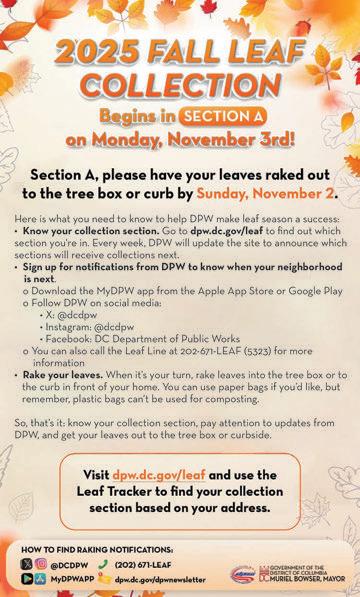

problems.
3. Difficulty completing familiar tasks.
4. Confusion with time or place.
5. Trouble understanding visual images and spatial relations.
6. New problems with words in speaking or writing.
7. Misplacing things and losing the ability to retrace steps.
8. Decreased or poor judgment.
9. Withdrawal from work or social activities.
10. Changes in mood or personality For more information about the signs, see the resource below. Alzheimer’s Association – 10 Warning Signs: www.alz.org/alzheimers -dementia/ 10_signs
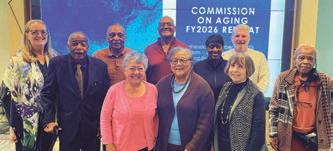




22.
By Lawrence Sprung, CFP®
We manage more of our financial lives through screens than ever before. We tap phones to pay for purchases and use apps instead of cash.
Digital payments are fast, convenient and arguably safer than carrying wads of cash, but with this speed and convenience comes an element of risk.
What happens when systems go down? Or, worse yet, what happens when someone breaks into the system?
Scams, hacks and system failures continue to rise, but implementing a few smart habits can easily help you enjoy the convenience of digital payments with greater safety.
Whether you use Apple Pay at the grocery store or send money through an app like Venmo, PayPal or Zelle to cover your share of dinner with friends, you’re part of a massive shift. In 2024, more than 4.3 billion people used “digital wallets” worldwide. That number is expected to hit 5.8 billion by 2029.
Most Americans now use some form of digital payment. According to McKinsey’s 2024 Consumer Payments Survey, 92% of U.S. adults used digital payments last year, including mobile wallets, apps and contact-
less cards. That number keeps growing. Unfortunately, fraud is growing, too. In 2024, the Federal Trade Commission reported a record $12.5 billion in consumer losses to fraud, an increase of 25% over the previous year.
Investment scams alone accounted for $5.7 billion. Identity theft, phishing and scams involving money transfer apps are becoming more frequent and more sophisticated.
Unlike a credit card, where you can dispute charges, money sent through a digital payment app is often gone for good unless the recipient returns the funds or the platform intervenes.
If you accidentally send money to the wrong person or a scammer, there’s no easy way to get it back without initiating a time-consuming fraud investigation that may or may not be successful.
These simple habits can help you enjoy the convenience of digital payments while lowering the threat of fraud:
Check before you send money. Whether you’re paying someone for work or sending money to a friend, take an extra moment to verify their name, email address or phone number.
One wrong letter or number can send your money to a stranger, and in most cases, you won’t be able to reverse the payment. Turn on transaction alerts. Most banks and payment apps let you receive real-time notifications when money leaves your account. These alerts can help you spot fraud quickly, which is key to minimizing damage.
Use a strong lock on your phone. If your phone is lost or stolen, a fingerprint, Face ID or PIN can prevent someone from accessing your payment apps.
You can also enable “remote wipe” features on Apple and Android devices, which let you erase your phone if it’s stolen.
Keep a little cash on hand. Digital payments don’t always work, especially during power outages or service disruptions. A small amount of cash in your wallet can help in an emergency.
Don’t click on suspicious links. Scammers can send fake texts or emails pretending to be your bank or payment provider. If you get a message asking you to “verify” a transaction or reset your password, don’t click on anything, and don’t call the number they provide. Instead, call your bank directly or go directly to its app or official website.
Report fraud fast. If you notice a suspicious charge or lose your device (or if some-
thing simply feels “off”), contact your bank or provider right away. Most services have time limits for resolving fraud or recovering lost funds, and your own liability typically increases the longer you wait to report it.
Use two-factor authentication. This extra layer of security, usually a text message or authentication code, can prevent someone from logging into your accounts even if they have your password.
Update your devices. Software updates aren’t just about new features — they often fix security vulnerabilities. Keep your phone and apps up to date to stay protected against the latest threats.
Technology moves quickly, and digital payments are only going to become more common. That’s not necessarily a bad thing. By building a few good habits now, you can stay a step ahead of fraudsters and keep your money where it belongs. Digital convenience is here to stay. Just make sure your guardrails are, too.
This article was written by and presents the views of a contributing adviser, not the Kiplinger editorial staff. You can check adviser records with the SEC or with FINRA. © 2025 The Kiplinger Washington Editors, Inc. Distributed by Tribune Content Agency, LLC.
Dear Savvy Senior,
What kinds of legal documents do I need to help my family take care of me in my elder years? I would like to get my affairs in order but could use some help.
—Approaching 80
Dear Approaching,
All adults, especially an older adult like yourself, should have at least five legal documents to protect yourself and your family. These documents will make sure your wishes regarding your estate are legal and clear and will help minimize any conflicts and confusion with your family and your healthcare providers if you become seriously ill or when you die.
along with some tips to help you create them.
Durable power of attorney: This document allows you to designate someone you trust to handle your financial affairs if you become incapacitated.

Advance directive: This includes two documents that spell out your wishes regarding your end-of-life medical treatment. The first is a “living will,” which tells your doctor what kind of care you want to receive if you become incapacitated. The second is a “healthcare power of attorney” (or healthcare proxy), which names a person you authorize to make medical decisions on your behalf if you’re unable.
Orders for Life-Sustaining Treatment (see POLST.org). This is a state specific form that your doctor would fill out that translates your end-of-life wishes into medical orders to ensure your wishes are carried out.
A will: This lets you spell out your wishes of how you’d like your property and assets distributed after you die, whether it’s to family, friends or a charity. It also allows you to designate an executor to ensure your wishes are carried out and allows you to name guardians if you have dependent children.
In addition to a will, if you own real estate or have considerable assets, another option you may want to consider is a “revocable living trust.” This functions like a will but allows your estate to avoid the time and expense of probate (the public legal process that examines your estate after you die).
your medical care and medical bills with those you designate. You may need specific HIPAA release forms for each medical professional you deal with.
If you have a simple estate and an uncomplicated family situation, there are doit-yourself resources that can help you create all these documents for a few hundred dollars. Some include Quicken WillMaker & Trust software (see WillMaker.com), Trust & Will (TrustandWill.com) and Legal Zoom (LegalZoom.com).
If, however, you want or need assistance or if you have a complicated financial situation, blended family or have considerable
Here are the key documents you need,
To complement your advance directive, you should also consider getting a Physician
HIPAA release: This form gives your healthcare provider permission to discuss
See SAVVY SENIOR , page 22
By Tom Murphy
Fewer choices may be on the menu again as Medicare patients shop for prescription coverage this month.
The number of available, stand-alone drug plans has fallen for a few years, and that trend will continue for 2026.
Most markets will still have several choices, but some options are becoming particularly sparse for shoppers with low-income subsidies. And help may be harder to find because some insurers no longer pay broker commissions for new business.
Shoppers have from Oct. 15 to Dec. 7 to find new coverage that starts in January. Here are some things to consider:
Regular Medicare, which most people qualify for after turning 65, does not come with prescription coverage, known as Part D.People must choose that separately.
About 23 million people with regular Medicare have this standalone coverage, according to the nonprofit KFF, which studies healthcare.
Another roughly 34 million people have Medicare Advantage plans, which are privately run versions of Medicare that often come with prescription coverage.
Virginia residents can choose from nine standalone drug plans, down from a dozen last year, while Marylanders will have 10 to choose from, down from 18 in 2024. There are around 14 plans to choose from in Washington, D.C.
Yet shoppers had nearly 30 choices as recently as 2021, according to the Commonwealth Fund’s vice president of Medicare, Gretchen Jacobson.
A range of one to four plans will be available at no premium to people who qualify
for low-income subsidies, according to KFF. In addition, Americans with limited income can receive assistance with their prescription drug coverage from the federal Medicare Rx Extra Help.
Some insurers are reducing their presence in standalone Part D plans, while the Blue Cross Blue Shield carrier Elevance is leaving the market entirely.
Insurers and analysts who follow the industry note that the Inflation Reduction Act, which will cap annual out-of-pocket drug costs at $2,100 in 2026, puts more financial pressure on insurers. The same law now allows patients to spread the cost of prescriptions over the year.
Most markets will have several choices. But experts say Medicare Part D customers don’t like to shop, especially if they already have a plan that covers their medications. Finding affordable coverage for multiple prescriptions can be tricky.
“I think there’s a lot of inertia and, frankly, people may be concerned that if they switch, they’re going to end up worse off,” said Juliette Cubanski, deputy director of the Program on Medicare Policy at KFF.
More people are being pushed to shop. Nearly 11% of those with standalone prescription drug coverage lost their plan in 2024, according to research published recently in the Journal of the American Medical Association
Monthly premiums, or coverage prices, will fall nearly 10% on average to $34.50, the Centers for Medicare and Medicaid Services announced in September.
At least one option with a premium of under $20 exists in almost every region of the country, according to the consulting firm Oliver Wyman.

Individual prices will range widely, with premiums for the same plan varying by state, Cubanski noted.
But while plans may provide lower coverage prices, they could also raise deductibles or offer more limited lists of covered drugs, which are called formularies. Shoppers should check these details.
Insurers will be allowed to raise premiums by as much as $50 a month for 2026, up from a $35 increase allowed this year. But Cubanski said only some plans will hit that higher limit and not necessarily in all states.
Shoppers can use a federal government website to compare plan prices and coverage.
States also have a State Health Insurance Program created specifically to help people
on Medicare find coverage. In Maryland, call (410) 767-1100; in D.C., contact (202) 727-8370; and in Virginia, call (800) 552-3402.
Consumers can help themselves by checking their coverage for changes and comparing it with other plans.
Shoppers also should consider whether their pharmacy is in the network covered by any plan they are considering.
The enrollment window spans several weeks, but brokers say many people wait until that first week in December to make decisions, often after talking with family during holiday dinners.
That can create a deadline crunch that makes it harder to find help in early December. —AP

By Margaret Giles
Retirement researchers are often enthusiastic about annuities, but many consumers are reasonably skeptical.
Christine Benz, Morningstar’s director of personal finance and retirement planning, discussed basic information about annuities and their pros and cons. (This interview has been edited for length and clarity.)
Q: How do income annuities work, and how are they different from investing in something that pays out income, like bonds?
A: An annuity is a contract with an insurance company. In the most basic annuity type, income annuities, you give the insurance company a pool of your money, and
they send it back to you as a stream of income over your lifetime.
Those types of products give you more income than you could earn by investing in a bond.
They do that because you benefit in the annuity by what’s called “longevity risk pooling,” which means that some people who are buying that same annuity will die sooner, which enlarges the payout for the whole group of you.
If you’re the one who lives to be 99, you’re the winner in that situation. That’s one reason that payouts are higher than you’d see for traditional fixed-income instruments.
The other big reason is that if you buy an annuity, your money is gone, effectively.


You get cash flows, but you can’t get your principal back. In contrast, when you buy a bond, you receive income, but you receive your principal back at the end.
Q: How can these types of annuities help with retirement planning?
A: These very basic income annuities can be helpful in terms of addressing a household’s basic living expenses.
Say my household basic expenses — housing, taxes, healthcare — total $40,000, and Social Security is going to give me another $30,000 of that $40,000. I could buy an annuity that will supply me with $10,000 a year to help meet those basic cash flow needs.
That’s an elegant use of an annuity, and it can help retirees figure out how much they would want to put into such a product by examining how much they actually need from it.
Q: Savings annuities, or “deferred annuities,” allow investors to get market exposure in addition to income. What are some key savings annuity types?
A: The most familiar one is a variable annuity, where you’re in control of the investment allocations.
There are also increasingly popular “fixed index” annuities, where you get market exposure, but there are caps on your gains.





There are also caps on your losses. Registered index-linked annuities fall between those two product types on the risk spectrum.
Q: These products are more complicated than income annuities, and they carry more risk and higher
From page 20
assets, you should hire an attorney. An experienced lawyer can make sure you cover all your bases — especially when writing a will or living trust — which can help avoid family confusion and squabbles after you’re gone.
The National Academy of Elder Law Attorneys (NAELA.org) and the National Association of Estate Planners and Councils

costs. How can investors make sure they know what they’re getting into?
A: Typically, these products carry really long contracts with lots of fine print. That can be very difficult for consumers to wade through. You can hire an objective third party to help you understand what you might be getting into.
At a minimum, write down all of your questions. There are no stupid questions in this context, because transparency isn’t there for consumers.
Ask about costs, withdrawals and what you’re getting with this product that you couldn’t get with a very vanilla investment portfolio that would also give you more liquidity and more access to your funds. Until you have exhausted all of those questions, don’t sign on the bottom line.
You also want to ask about the financial strength of the insurance company backing the annuity, because this is a long-term relationship. You need to make sure that they’re able to make good on whatever promises they’re making.
Q: What are the tax implications of annuities?
A: It depends on the account that you use to fund the annuity, but generally, you will owe taxes. You get some tax deferral as long as the funds are in the annuity, and then you’ll owe taxes on any money that hasn’t been taxed yet.
If you put pretax dollars into an annuity and it makes investment gains, all of your withdrawals will be taxable at your ordinary income tax rate.
This article was provided to The Associated Press by Morningstar. —AP
(NAEPC.org) are two good resources that have directories on their websites to help you find someone in your area.
If money is tight, check with your state’s bar association (see FindLegalHelp.org) to find low-cost legal help in your area. Or call the Eldercare Locater at (800) 6771116 for a referral.
Send your questions or comments to questions@savvysenior.org, or to Savvy Senior, P.O. Box 5443, Norman, OK 73070.

Where engineering excellence meets sleek design - a lightweight, saf customizable, and stylish scooter for UNLIMITED FREEDOM.



Numerous scooterswith various featuresand capabilities are on th market, making it crucial to select the one that best suits your requirement
n
impacting my daily life. Simple tasks like going to the store or meeting friend became challenging, and I even had to cancel a long-awaited anniversa trip to Italy.
My husband purchased a scooter for me, but it wascumbersome an uncomfortablefor everyday use, leaving mefeeling more constraine than liberated. However, everything changed when I came across the ATT hikbl dbh li
SPORT. This remarkable scooter proved to be a game changer. Not on robust and reliable, but it also conveniently splits into two pieces, allo
trip to Italy! I am now independent once more, able to go wherever I p struggles to keep up with me!

How did Anna start to enjjoy life to the fullest? e s A


What make AT T TO so unique? ?
Independence& Convenience: Easy touseand conveniently into a compact suitcase size for simple storage. It easily separates two parts in seconds, with the heaviest piece weighing just 37 pou making it easier to lift into your car trunk.
Go Anywhere: Conquerany terrain with puncture-proof, sh absorbing tires and a 4-inch ground clearance. Equipped with elect
approved, ideal for air travel and cruise ships. With a driving ran upto 12.5miles(25mileswith the XLbattery),a topspeedof 6.2 M and amaximum weight capacity of 300pounds, this durable sco is designed for longevity. T NhE i i G ib h f d d bili

folds s into unds,
hocktronic ge of MPH, ooter
Toop-Notch Engineering: Guaranteeing both comfort and durability, this superportableandlightweight,andstill rideslikeaheavy-dutyscooter.
Unmatched Stylish Design: You deserveamobility solution that doesn't just get you from A toB but makes you feel great whiledoing so. ATTO stands out from the crowd with its stunning design.







Lightweigh makes li effortl























I’m a Seniors Real Estate Specialist® who is steeped in knowledge and experience. My unique marketing and master negotiating skills are For your free copy of my “R Guide”, “Market Ready Guid “Senior Living Community D download them from the “R
wrapped up in kindness, h protective care. I guide yo sell for top dollar while sup with the very best resource When it’s time to Rightsize I am the Realtor® you wan
your onestyy, , and ou in how to pporting you es. eyour home, nt to call. section of Eri call me direct a personal co estate needs




or


By Maurie Backman
Q: A good friend recently died and it made me wonder, should I prepay for my own funeral? Is it worth it to set up now while I’m in my 50s?
A: I’m sorry to hear about your friend. Sometimes it takes a loss to make us face our own mortality — and the costs that come with it.
Chances are, you’ve put a lot of thought into planning for different milestones during your lifetime — buying your first house, sending your kids off to college, and retirement. But it’s just as important to plan for what happens once you’re no longer around.
In the course of your estate planning, you might write up a will or put a living trust in place for an easier transfer of assets.
Another important aspect of estate planning you may want to consider is arranging your funeral ahead of time. That could mean choosing a location and providing detailed instructions to your loved ones about the type of service you want.
It might also involve paying for your funeral ahead of time so your loved ones don’t have to. Here’s what to consider.
The benefits of prepaying for your funeral
• Beat inflation: The National Funeral Directors Association said that in 2023, the median cost of a funeral with a viewing and burial was $8,300. That will rise over the years.
“Funeral costs have historically increased 3% to 5% annually, so a $10,000 funeral today might cost $16,000 in a decade,” according to Phillip Reed, estate and asset protection attorney at Reed Law PLC. “My friend who lost his wife unexpectedly had a $36,000 funeral expense, which he had to pay within weeks of his wife’s passing.”
• Avoid probate : Plus, Reed said, “Prepaid funeral plans bypass probate entirely, meaning your family isn’t scrambling for cash.”
Assets left to loved ones in a will have to go through probate, which means they could be tied up for months or even years, said Renee Fry, CEO at Gentreo, Inc.
But a funeral can’t wait months or years, which means your family may have to scramble to come up with the funds for a funeral.
“It’s a common misconception that monies left to your heirs in a will can be used right away to pay for one’s funeral,” Fry explained. “Given that so few of us have money on hand to pay for a burial and funeral, pre-need planning has become popular.”
• Remove your family’s stress : Another benefit to prepaying for your funeral? It removes the burden of decision-making from grieving loved ones, Reed said.
“I’ve watched families argue over burial versus cremation, casket choices, and service details, all while emotionally devastated,” he said. “When you make these decisions yourself, you spare them that anguish.”
While there are benefits to prepaying for your funeral, there are some pitfalls.
• Your circumstances may change: “One big issue with prepaying for your funeral,” said Reed, “is if you move or change your mind about where you want services held, transferring prepaid plans can be complicated and sometimes impossible. Some plans aren’t portable, meaning you could lose money.”
Allocating funds to your funeral in a different way, without prepaying for a specific location, is something you may want to consider.
• What if the funeral home goes out of business?



“This can be solved by making sure your money goes into a trust or insurance product, not just directly to the funeral home’s operating account,” Reed said.
Reed cautions that insurance products can vary by state, so it’s important to consult with a professional to understand how this option might work.
• Beware of Medicaid eligibility rules: Another issue that could arise if you prepay for your funeral, said Reed, is complications with Medicaid.
“Prepaid funeral plans, up to certain limits, are typically exempt assets that won’t affect Medicaid eligibility, but only if structured correctly,” he said. However, Reed said, “If set up correctly, this can be a smart estate planning move for those concerned about long-term care costs.”
Many ways to prepay
Funeral costs are only likely to rise over time, and tools like wills or even trusts may not give your loved ones access to money to pay for a funeral quickly.
“Even ‘simple’ estates can take six to 12 months to settle,” Reed pointed out.
One possible alternative to prepaying for a funeral is using a life insurance policy with a named beneficiary. But even those payouts can take weeks, Reed cautioned.
All told, Reed calls prepaying for a funeral “a good option.” But you may want to consult a financial adviser or estate planning attorney to see if it’s a good one for you.
© 2025 The Kiplinger Washington Editors, Inc. Distributed by Tribune Content Agency, LLC.
Road Scholar’s new online lecture series, Age Well, explores every aspect of aging: maintaining strength in body and mind, staying connected and purposeful, and remaining confident and graceful into life’s Fourth Age. The one-hour sessions are free and include access to a Facebook Group, blog posts and book recommendations. For more information, visit roadscholar.org/agewell.
Lifeline Service in the District of Columbia is provided by Verizon Washington, DC Inc., and Verizon Online LLC
Lifeline is a government assistance program supported by the District of Columbia Public Service Commission and the Federal Communications Commission. Verizon offers the following Lifeline-supported services as an Eligible Telecommunications Carrier:
• Voice Dial Tone Line and Unlimited Local Usage - $1 - $3 per month (after Federal & State discounts)
• Broadband (Internet) - $9.25 monthly discount off any Fios plan
Only eligible consumers may enroll in the programs.
You may qualify for Lifeline service if you can show proof that you participate in certain government assistance programs or your annual income is 135% or below the Federal Poverty Guideline. If you qualify based on income, you will be required to provide income verification. For a list of qualifying government assistance programs and income guidelines, please see your state’s application form from the DC Lifeline Program website.
In addition, the Lifeline program is limited to one discount per household consisting of wireline, wireless or broadband (Internet). You are required to certify and agree that no other member of the household is receiving Lifeline service from Verizon or another provider.
Lifeline service is a non-transferable benefit.
Consumers who willfully make false statements in order to obtain the benefit can be punished by fine or imprisonment, or may be barred from the program.
You must meet certain eligibility requirements in order to qualify for the Lifeline service. An application for Verizon Lifeline service can be obtained at this same website, www.verizon.com/lifeline, or an application can be mailed by calling 1.800.VERIZON (1.800.837.4966).
To find out more information, you may also call the Universal Service Administrative Company (USAC), which administers Lifeline for the FCC by calling (1.800.234.9473) or by accessing their website at www.LifelineSupport.org.
All rates, terms and conditions included in this notice are subject to change. For current Verizon Lifeline information and rates, visit www.tariffs.net/verizon/. See link titled “Verizon Lifeline Information” for state specific pricing.

By Don Mankin
The wind blasted me as I neared the edge of the cliff. Leaning into the gust, I struggled to stay on my feet. Deciding that my safety was more important than another spectacular view, I reluctantly turned back.
I was in the Faroe Islands, an archipelago of 18 islands in the North Atlantic about midway between Norway and Iceland. With more sheep (about 80,000) than people (about 50,000), the Faroe Islands, literally the “sheep islands,” are beautiful, bucolic and peaceful, except for the occasional raging wind.
The islands are an awe-inspiring land of jagged rock pillars overlooking pounding seas, waterfalls cascading from hills and cliffs, fjords serrating green hills dotted with sheep, and villages of grass-covered houses.
“If Ireland and Iceland had a baby, it would be the Faroes,” declared Michael Bennett, founder of the travel company Explorer X, who accompanied me on my trip last fall.
Return to the North Atlantic
I have been drawn to the rugged lands at the extremes of the earth — Antarctica, Iceland, northern Alaska, northern Scotland, the Canadian High Arctic, among others — since a trip in 1969 that sparked a passion for remote regions of the world.
On that trip, I drove my new Volvo, fresh from the factory in Sweden, from Copenhagen to the North Cape, the northernmost point in Europe, then down the northern fjords of Norway and back to the factory in Sweden to ship home to Pennsylvania.
I’m not sure what it is about these lands — dramatic, vast, even a bit scary — that appeals to me. Perhaps it’s the sense that there is something bigger than myself, which takes me out of my head and reminds me that I am just a mere speck in the universe. Whatever it is, the Faroes were the ideal place to once again experience this feeling of transcendence.
Copenhagen comeback
As a self-governing part of Denmark, the Faroes are easy to reach from Copenhagen, the starting point for my seminal trip in 1969. Before heading to the islands, I spent my one day in Copenhagen on a long, nostalgic walk revisiting hazily remembered sites.
I wandered through Christianshavn, a bohemian neighborhood, to Nyhavn, a historic 17th-century canal district with colorful buildings, classic wooden ships and many restaurants lining the canal.
I continued to the Rosenborg Castle, a Renaissance castle that houses the Danish crown jewels. Instead of taking a tour of the building, I opted for a leisurely stroll through the King’s Garden, a large park in front of the fortress, then on to Strøget, a long, car-free pedestrian shopping street, one of the first in Europe.
From there I headed to Tivoli Gardens, a historic amusement park that opened in 1843 and is one of the oldest in the world.
By the time I reached my destination, however, I was tired from jet lag and the more than four miles I had already walked. That, plus the $35 admission charge, dis-


suaded me from revisiting the fondest and most vivid memory of my earlier visit, so I headed back to my hotel instead. All in all, I had a full, nostalgic day.
The next day, it was on to the Faroes. Our five days there kicked off in dramatic fashion, with a high-octane RIB (rigid inflatable boat) tour around Hestur Island.
The boat roared across the sound, then slowed down as it circled the island to give us a view of its many sea caves, including the world’s biggest sea grotto, etched into 1,000-foot cliffs. As we twisted on the large, choppy swells, I marveled at the sheep nonchalantly nibbling grass on the steep slopes, just a slight misstep away from plunging into the crashing surf below.
Over the next few days, we gawked at waterfalls, heard legends worthy of a Netflix series, and visited the home of a local family for dinner. Over heaping platters of local salmon, lamb, roasted potatoes and rhubarb crisp, Anna and Oli described their everyday lives, especially the challenges of raising and herding sheep in this rugged land.
We even took a helicopter from the main island of Streymoy to the tiny, westernmost island of Mykines. This wasn’t a tourist experience but a regularly scheduled route run by Atlantic Airways, the national carrier of the Faroe Islands.
Since the purpose of our trip was to get
an aerial view of the precipitous cliffs, we didn’t get off in Mykines. If I ever have a chance to go back to the Faroes, I’ll spend a night or two in the tiny village on the island and visit the puffin colonies that populate the cliffs during the summer months.
The hikes we took were the ultimate highlight for me — an opportunity to be immersed in the majestic environment, rather than just gawk at it from a distance.
Our first hike, the most popular one in the Faroes, was to the iconic Kallur lighthouse on Kalsoy Island, the site of the finale of the James Bond movie No Time to Die
It’s not an easy hike — about an hour or more uphill on a muddy trail — but the breathtaking views from the lighthouse are worth the effort. A huge massif of sheer basalt looms over the scene on one side, while on the other, a narrow blade of land with steep drop-offs juts into the ocean.
A potentially treacherous trail runs along the narrow ridge. If I were younger and nimbler, I might have braved the trail, but at 83, good sense and age-tempered wisdom prevailed.
Our other hike, to the Lake Above the Ocean on the island of Vágar, was so enjoyable that we did it twice. The lake is sometimes referred to as the “floating lake”
By Sandi Barrett
Madrid’s many traffic roundabouts, anchored with towering statues softened by colorful gardens, resemble pinwheels for throngs of vehicles circling its many spokes. I love a destination with high energy — it gives me hope for a visit filled with lots of possibilities.
Madrid, with its hip, youthful vibe, is just that type of city. Its restaurants, plazas and meandering streets are filled with a continuous, lively hustle. Delicious tapas, fascinating architecture and beautiful art come together in Spain’s capital.
I visited the city in the fall, after the summer crowds ebbed. I started my tour at the Royal Palace, the official residence of the King of Spain. The 3,418-room palace is open to the public and welcomes nearly two million visitors a year.
Even more popular, the beautiful Prado Museum is home to important works by Spanish and global artists, displayed with an eye for artistic flow as you move from exhibit to exhibit. Classic masterpieces by Goya, Velázquez and El Greco anchor the collection. The museum is free two hours before closing and can be very crowded at that time. The entry fee is worth the price to view the art earlier, without the crowds.
Among the many other museums in the city, the Las Ventas Bullring and Museum offers visitors an iconic Spanish experience. If watching an actual bullfight is not in the cards (too violent for some), guests can try virtual bullfighting. Face off against a massive, virtual bull as you wheel around the Las Ventas area. Of course, a more sedate, classic tour is available for less adventurous guests.
A flamenco show is a must-see in Spain.


At the Tablao de la Villa, authentic flamenco is served up with a traditional dinner. The music and dance swept me away; it was an emotional experience.
Madrid is a very walkable city with lots of sprawling plazas, winding streets and grand boulevards. Plaza Mayor is the heart of Madrid’s social life. Originally built outside the medieval city walls, it was home to bustling markets. Today the plaza is filled with performing artists, vendors, cafés, college students and tourists.
The vibrant Puerta del Sol is at the center of the city. The “kilometer zero” point is marked with a plaque in front of the Royal House of the Post Office. A central meeting point for locals and tourists, the square is a lively spot with exuberant energy.
A fun gathering spot for tapas or beer is the Mercado de San Miguel. Enjoy yummy culinary delights from wine and cheese to pastries and coffee and everything in between.
Mesón del Champiñón is worth seeking out for its sangria, which is among the most amazing in the city. The house specialty, and my favorite, is champiñones rellenos con jamón (mushrooms stuffed with ham).
To make sure we found the city’s best restaurants, we booked a four-hour food tour with World Experiences (worldexperience.com/madrid). The Madrid Tapas & Wine Tour with rooftop views is a wonderful way to enjoy traditional Spanish cuisine while learning a little history. The tour visits delicious tapas bars, food markets and Iberian ham purveyors and culminates at a rooftop bar with a panoramic city view.
The iconic bocadillo de calamares , Madrid’s calamari sandwich, is a must-try. Find the breaded and deep-friend squid

rings sandwiched in a crispy baguette at small neighborhood cafés.
Centrally located, Madrid is an ideal base to explore more of Spain. Day trips are a wonderful way to round out your visit.
Just over an hour away, the former capital and historic city of Toledo is worth a trip. The capital was moved to Madrid in 1561,

allowing Toledo to retain its medieval charm. A UNESCO World Heritage Site, Toledo displays its stunning architectural beauty as it rises above the Tagus River. Wander through Toledo’s Jewish Quarter, an enclave for the country’s Sephardic heritage. Explore the Primate Cathedral of Saint Mary of Toledo, home to an interesting array








From page 26
because it’s on the edge of a cliff, about 100 feet above the ocean. Yet another spectacular waterfall spills from the lake into the ocean.
The first time, we hiked through a land reminiscent of northern Scotland on a relatively flat trail that runs to the cliff at the end of the lake. It was drizzly and foggy, though, so we couldn’t see much.
We gave it another try on our last day in the Faroes. Michael and Kevin, Michael’s friend from his college days, both in their mid-40s, surged ahead while I followed doggedly behind. After a few minutes, I had the trail pretty much to myself.
This time I almost made it to the end, but the wind stopped me dead in my tracks. Nonetheless, I felt a sense of accomplishment and was exhilarated by the effort and the lonely beauty of this harsh land.
It was the perfect manifestation of the
AMBASSADOR VOLUNTEER
Washington, D.C.’s Department of Aging and Community Living (DACL) connects older adults with meaningful volunteer roles, such as serving as ambassadors to help distribute information on services for older adults and those with disabilities. For more information and to volunteer, email dacl.communications@dc.gov or call (202) 724-5626.
HABITAT FOR HUMANITY VOLUNTEER
Habitat for Humanity of Washington, D.C., and Northern Virginia is looking for volunteers at its ReStores in Alexandria, Chantilly and Herndon. Volunteers can help with tasks like organizing inventory, assisting customers, accepting donations and merchandising. Shifts are flexible. For more information and to sign up, visit habitatdcnova.org/restore/volunteering-restore.
VOLUNTEER WITH INNER-CITY ADULTS
We Are Family is a nonprofit that offers companionship and advocacy for older adults in inner-city areas. Volunteers build connections through one-on-one visits and support community events designed to reduce isolation. To find current volunteer opportunities, visit wearefamilydc.org/get-involved/volunteer or call (202) 487-8698.

passion that has driven me for much of the past 20 years — a true adventure, accessible to an aging traveler who continues to thirst for challenging, transcendent journeys off the beaten track. I’m still not too old for adventure.
Round-trip, one-stop economy fares to Copenhagen start at $800 on American Airlines, British Airways and Scandinavian Airlines. Round-trip airfare between
From page 27
of artistic treasures. Stroll the back streets and alleys surrounding Zocodover Square to find charming little shops and quaint cafés.
Two hours away, Salamanca is a Renaissance city that dates to 220 B.C. Its ancient sandstone buildings have a distinctive golden glow, giving credence to its nickname, “La Ciudad Dorada,” the Golden City.
For a full day of exploring, visit the 800year-old University of Salamanca, the Cathedral (two buildings dating from 1513 and 1733), the House of Shells and Plaza Mayor, the largest plaza in Spain.
Copenhagen and the Faroe Islands on Atlantic Airways is about $350.
In Copenhagen, I stayed at the hip Bryggen Guldsmeden for about $250 per night. In Tórshavn in the Faroes, we stayed at the Hotel Hafnia and the Hotel Føroyar. Both hotels are about $250 a night.
In Tórshavn, we ate at Áarstova, The Tarv Grill House and HAPS. For a dinner with locals, see heimablidni.fo/en.
Don’s trip was organized and partially hosted by Explorer X (explorer-x.com).
Round-trip flights to Madrid start at $473 on United Airlines.
Whether you make a quick stop or an extended visit, you will love Spain’s hospitality. The Hotel NH Collection Madrid Paseo del Prado is an excellent home base. Outside the front door is the grand avenue Paseo del Prado, and it’s across the street from the Prado and Thyssen-Bornemisza Museum.
The five-star Four Seasons Hotel Madrid is situated above the iconic Galería Canalejas, home to the most influential global retailers, including Hermès, Chanel and more.





VOLUNTEER WITH UNITED WAY
United Way of the National Capital Area offers a variety of volunteer roles throughout D.C., Maryland and Virginia. Older adults can help by making encouragement cards, packing essential needs kits, mentoring and more. For more information, including current volunteer opportunities, visit unitedwaynca.org/take-action/volunteer or call (202) 488-2000.
AVOID ENERGY-RELATED SCAMS
Pepco reminds customers to stay alert and watch out for impostors who try to steal money and personal information. Scam reports typically increase during the holiday season. If you ever doubt the validity of a call or visit to your home about disconnection of service, contact Pepco at (202) 833-7500. To learn more about avoiding scams, visit pepco.com for additional tips and information.













By Lynda Lantz
Perhaps Tolstoy’s famous line should have been that every happy family is complex in its own way.
A joyfully complex family is front and center in playwright Reggie D. White’s play Fremont Ave., which runs at Arena Stage through November 23. The brand-new play introduces three generations of a decidedly loving, upper middle-class Black family who struggle to understand what they owe to each other and to themselves.
Brought to D.C. by acclaimed director Lili-Anne Brown, Fremont Ave. celebrated its world premiere here last month. It’s already the winner of a prestigious 2024 Edgerton Foundation New Play Award.
The experienced cast, hailing from screen and stage, are top-notch. A feast for eyes and ears, the production encourages audiences to respond during each performance.
Plot launches with a love story
In 1968, when newly minted doctor George Plique meets Audrey, he’s smitten. He’s hired her to clean his modest, midcentury home on Fremont Avenue in suburban Los Angeles (stone wall, wood cabinets and sleek furniture courtesy of set designer Tim Mackabee).
Bradley Gibson, who deftly plays all three generations of Plique men in their youth, demonstrates George’s awkward balance between his life as a professional Black man of education and his private dreams of playing and writing music.
A confident Jerrika Hinton brings straight-talking Audrey’s complexity to life. Folding laundry, she relishes George’s wonderful singing and piano playing and nudges him to reach his potential at work.
In time, George romances Audrey with


his emotional maturity. Once married, he turns down a less stable, creative opportunity without consulting her, which affects both her and her son, Rob.
Clothes (and hair), by costume designer Jos N. Banks, work hard in this production. George’s two-tone sweaters and polished shoes reflect his love of style and status, while Audrey’s neat, utilitarian slacks and tops underscore that she doesn’t have the luxury of caring about looks — until later, in the 1990s, when she emerges in a church ensemble with a soaring sculpture of a hat that speaks to her new goals and self-image.
At the center of the feverish montage of hip-hop, dancing, card-playing and wisecracking that is Act Two is Rob (Gibson). His failure to pass the bar exam and anxiety about family expectations leave him directionless in his 20s as three of his friends launch legal careers.
Through these times, troubled by the Rodney King beating, Clinton’s infamous “three strikes” legislation, the Hill-Thomas hearings and the O.J. Simpson trial, the friends push back with sharp wit and relax in the security of their friendship.
Music from the boombox (by André Pluess) amplifies the fun in this production. When certain songs hit, three card players jump up and execute coordinated dance moves. Act Two was complicated and a little hard to follow, but the audience responded enthusiastically to the music and choreography.
In Act Three, in the 2020s, the unthinkable happens: The family loses its matriarch. Grandson Joseph (again, Gibson), his father Rob (Kevin Mambo) and grandfather George (Doug Brown) gather to bury grandmother Audrey, joined by Joseph’s boyfriend, Damon (Galen J. Williams).




One way the play anchors the audience in this sprawling saga is by having Joseph repeat to Damon pivotal dialogue between Audrey and George. Although the words are the same, Audrey’s survival tactics












may impede Joseph, who felt Audrey’s disapproval of his homosexuality even as she doted on him.
Without Audrey, the men of the family





























From page 1
unfamiliar people, not their families. Their sense of well-being can be deeply affected.
“This happens more with older cats; they were used to their own quiet castle,” Anselmo said. “They are struggling and really stressed out; they hunker down, hide and won’t eat.”
Fortunately, many of these older cats and dogs are taken in by foster families, who keep them in their homes temporarily, Anselmo said.
A foster home can reduce some of the animals’ stress, helping to reveal their unique personalities and restore their playfulness and bond with humans.
Why adopt a pet at all? Well, there are some health benefits to owning an animal.
“They provide companionship … reduce stress, and lower blood pressure,” said Erin Johnston, director of marketing and outreach at D.C.’s Brandywine Valley SPCA.
Pets give people a reason to live — or just get out of bed every morning — which is one of the pillars of longevity.
“There are a lot of benefits to having a pet
From page 29
learn to say what they have not been able
— a sense of purpose and routine, because you have something to take care of,” said
Melissa Batchelor, a professor at the George Washington University School of Nursing and host of the podcast “This is Getting Old.”
Prospective adopters should keep in mind that pets may require owners to go on daily walks or at least bend down, which may be challenging at first, Batchelor said.
“But it might improve your overall functioning by making you get up and down, so you’re almost building in balance and strength training,” she said.
Unlike puppies or kittens, older animals tend to be well-behaved, trained and mellow.
“They’re not still chewing on your shoes or peeing on your carpet,” Anselmo said. “Their energy levels are generally on the lower side. They have already worked out what life is all about, and they are just looking for someone who wants to share that life with them.”
Some older pets might need special diets or medications, but this isn’t always the case, Anselmo said.
to in the past, admitting past grievances and expressing love and vulnerability.
Of course, having Bradley Gibson play the young version of all three generations

Although older pets “tend to develop more health conditions,” she said, “not all seniors have those conditions. Animals are living longer and longer.”
Still, prospective owners should consider their finances before adopting and be ready to cover costs for vet visits, food and other essential supplies.
In addition, it’s important for older people to keep in mind that the animal might outlive them. It’s best to have a care plan in place in case that happens.
Many shelters provide a range of services to help animals remain with their owners, including lists of affordable veterinary clinics and pet-food pantries for those facing financial difficulties. Contact your local animal shelter for more information.
Who is most likely to adopt older pets?
“Typically, older members of the community will adopt … and they are looking at having some companionship,” Kachur said.
Yet people of all ages may seek out older pets or animals with special needs.
“We also see younger people who have a soft spot for older pets and will come specifically looking for a senior pet or a pet with a chronic condition such as diabetes or a missing limb,” Johnston said.
emphasizes the themes of repetition and change. Gibson’s rendering of each generation is so precise and individualized that I forgot it was the same actor, thanks to strong assists from hair (LaShawn Melton) and costume.
In the final scene, Damon joins Joseph at the piano, resting his head on Joseph’s shoulder as Audrey once did with George.
Other ways to help
There are many ways that people who aren’t able to permanently adopt pets can help. Shelters welcome volunteers and typically accept donations of supplies (food, toys, blankets and towels) as well as financial contributions.
Additionally, most shelters offer training for those interested in fostering a pet, which they would care for temporarily while that pet awaits their “forever home.”
If you’re ready to meet a live-in furry friend, there are many available who need homes, particularly the harder-to-place, mature pets.
“I truly think there is a meaningful connection when an older pet comes to their new home,” Anselmo said.
“Seeing an older animal being passed over and how grateful and at peace that animal becomes [when adopted] — I think they bring extra joy because anybody who saves a life like this can’t help but feel good about it.”
For more information, contact the Montgomery County Animal Services and Adoption Center at (240) 773-5900; the Brandywine Valley SPCA at (202) 888-7387; or the Fairfax County Animal Shelter at (703) 324-0299, or view their websites to see photos of available animals.
They are better off for having each other, and we are better for seeing this funny, rich play.
At two hours and 45 minutes with one intermission, this play includes language not suitable for children. Lyft and taxis may be reserved at Visitor Services upon arrival. There is also an on-site parking garage. For tickets, see tickets.arenastage.org/events.
Please tell our advertisers, “I saw you in the Beacon!”






Don Juan & Romeo and Juliet
Grimaud pla
omeo and J on J
Two visions of love: Strauss’ D Juuan, a man’s restless pursuit of passion; and Tchaikovsky’s R Juuliet, a fated tale of love at its purest. Led by Jader Bignamini, the program also features Gershwin’s jazzy Piano Concerto with Hélène Grimaud.
Jader Bignamini , conductor
Hélène Grimaud , piano
Oct. 30–Nov. 1 | Concert Hall
NSO PRESENTS:
Alexandre Kantorow
A
Hailed as the “reincarnation of Liszt” (Fanfare Magazine), youngest winner of the Gilmore Artist Awward Alexandre Kantorow mak Waashington, D.C., debut! Don’t miss this rare opportunity to experience Kantoro y, , se y, , and technical piano pro ayy.
es his W
y wess on full displa nsitivity w’s artistry
Please note: the NSO does not perform on this program. Alexandre Kantorow , piano
Nov. 1 | Concert Hall
Pla
ComprisingtitledmusiciansoftheNSO thisacclaimed
. The Pla
Comprising titled musicians of the NSO, this acclaimed ensemble presents an afternoon of chamber music masterworks ayyers’ fall program ranges from Brahms’ Romantic passion to Fauré’s French lyricism and Hindemith’s refined modernity.
Lin Ma , clarinet
Ying Fu , violin
Daniel Foster, viola
David Hardy, cello
Lambert Orkis , piano
Nov. 2 | Terrace Theater





pSteven’s Classical Mixtape
NSO Principal Conductor and Artistic Advisor Steven Reineke ayylist of his dreams to life in this hand-picked concert of classical hits! To celebrate the NSO’s 95th season, Steven’s Classical Mixtape is packed with blockbuster flair and unforgettable melodies— from érro to Clair de Lune, Nimrod, and Pines of Rome, plus a fe ayy. . A light classical night for seasoned symphony fans and first-timers alike!
Bolé brings the pla
y w surprises along the wa
Steven Reineke , conductor
Nov. 7 & 8 | Concert Hall




w Y (The N with wit and pla on of Ohlsson pla
ayys Beethoven
Under the bat f Louis Langrée, Saint-Saëns’ mighty “Organ Symphony” rises with cathedral-like grandeur as orchestra and organ unite in a thunderous, triumphant climax. Beethoven’s Piano Concerto No. 1 sparkles ayyful charm, brought vividly to life by Garrick Ohlsson’s “fingers, fortitude, and freewheeling imagination” Ne e Yoork Times)
Louis Langrée , conductor
Garrick Ohlsson , piano
Mar vin Mills , organ
Nov. 13–15 | Concert Hall
Tchaikovsky’s Fifth F ayys Lut awwski
errández pla
osła
PrincipalConductoroftheLondonPhilharmonic
Principal Conductor of the London Philharmonic Orchestra Edward Gardner leads Tchaikovsky’s ever-popular Symphony No. 5. With soaring melodies, roaring brass, and balletic grace, the Fifth is a wild ride of heart-on-sleeve emotions. The program also features the NSO debut of Pablo Ferrández in Lut awwski’s imaginative Cello Concerto, a work of daring intensity and striking contrasts.
Edward Gardner, conductor Pablo Ferrández, cello
Nov. 20–23 | Concert Hall








Q: I’m 69 and have been divorced for 30 years — a few boyfriends here and there, but my last relationship was over a decade ago. I recently moved to support my family. While I’m loving the grands and being close to my daughter, I’m lonely.
I’ve tried dating apps, but I’m not interested in the people who reach out to me, and I feel bad telling them that. And the ones I reach out to don’t respond.

logical that the amount of money we spend will correlate with success. But in talking with older daters all over the country who’ve shelled out various sums for a variety of ways to find potential partners, and with mixed results, one thing seems certain: We don’t necessarily get what we pay for.
By Laura Stassi
I recently made an inquiry with a dating service that would select matches for me and make all the arrangements. It’s very expensive: $6,000-plus. The well-experienced dating coach said it’s worth it to land a secure, top-rate man. She also told me since I’m almost out of my 60s, I’d better hurry up because I’m not getting any younger, and she doesn’t have many men in their 70s and older who are dating.
The sum is doable for me financially but such a gamble. Do you think it’s worth it?
A: Finding love … sigh. It might seem
Like you, a lot of us have turned to the apps. While some are completely free — here’s looking at you, Facebook Dating — others require users to pay for additional features. On Match, for example, you pay more for unlimited messaging and boosts to increase your profile’s visibility.
The main difference between a dating app and a service like the one you’ve described is that basically, you’re hiring someone to do all the scrolling, reaching out and vetting you’d otherwise do on your own.
But there’s another key difference: The services usually turn to their existing pool of clients to make love connections. Dating apps typically offer a more robust pool of potential partners. Dating services claim





to offer quality over quantity. I can relate to “app fatigue” on the one hand and the desire for romantic companionship on the other. But I’m turned off by your prospective dating coach’s doom-andgloom attitude about finding love after a certain age. Even if I had $6,000 to gamble — because that’s what it is, a gamble — I’d probably look to invest in a service with a more positive outlook.
Before committing to spending a significant sum on any dating service, I’d want answers to the following questions, preferably in writing:
• How large is the service’s existing pool of daters in my specified parameters, including geographic location, age and education level?
• How many dates is the service promising to deliver, and in what time frame?
• What information is shared by the service before the actual date? (Will we each know what the other looks like, for example, or how we fit each other’s desired qualities?)
• Do no-shows count toward the total number of dates promised?
• Am I able to cancel within a certain time period and get money refunded if I’m dissatisfied?
For a wider perspective on the invest-tofind-love topic, I asked my podcast listen-







ers to take an informal survey on how much they’d spent, and whether they felt the cost was justified. Here are excerpts from some of the responses:
• “I spent a total of $1,730 on seven different apps. Now that I see the numbers, I am embarrassed and disheartened by the money I spent. My current relationship status is domestic bliss with a man found on an app.”
• “I spent $6,000 for three months on a dating service — absolutely worthless. My partner is someone I’ve known since college. Longtime friends, and we started dating a few years ago. I couldn’t be happier!”
• “Two apps, total of $30? I spent hardly any money, but I spent time, and that has value.”
• “I spent nothing for a free week with one app, met someone, and we were together until he died. Four years later, I got on a different app for a month and met a man I eventually married. I don’t remember what I paid, maybe $75 to $150? But it was well worth the cost. I was always on a budget so was cautious about spending too much on dating sites.”
Laura Stassi is the host of the podcast “Dating While Gray: The Grown-Up’s Guide to Love, Sex, and Relationships” and author of Romance Redux: Finding Love in Your Later Years. Send your questions to Laura at newloveafter50@gmail.com

Montgomery County is proud to celebrate a major milestone —10 years since joining the World Health Organization’ssGlobalNetwork for AgeFriendly Cities and Communities.

This celebration isn’t just about reviewingpastaccomplishments.I t ’s s
•The Mobile program ha outcomes fo ambulance whom are o
I ntegrated Health s improved health or frequent users of ser vices, many of older adults
• f Fire and Res free home -s detector ins foolios, and L prevent ove
scue Services provides safety checks, smoke stallation, F fe e Leave Behind Narcan to erdose deaths.
ile of Lif
T ’ Let ’s s Keep the Momentum Going
’ ’
Teen years in, Montgomery County has shown what ’s s possible when a community comes together. But the work isn’t done. Here’sshow you can help:
Y
•Home Acces
Thanks to strong par tnerships between County depar tments, nonprofits, businesses, faith communities and residents like you, real progress has been made. Here ar feew examples:
e just a f ” of “ ing f eviewing past ac . I about look foor ward — and getting people like yourself involved.
• t f ’ The Count y ’s s Pedestrian Master Plan includes changes in street design to increase safet y and comfor foor older adults and people with disabilities
• Volunteer-led organizations called Villages have grown in number and sophistication, organizing to suppor t neighbors who choose to age in place.
Program pr homeowners fr rehabilitation pr items for their homes
ssibilit y Rehabilitation ovides eligible rs with free on and falls prevention eir homes.
• er ’ The Silver Spr and Aquatic C County ’s s eig cent r, , co-loca senior housing c
ed with aff
pring Recreation c Center includes the ghth full-ser vice senior ocat ffoordable ing and a health center.
• ’ Montgomer Attorney ’s s C and Vulner investigated appr cases, bring Distric t and C
’ r y County State’s s Crimes Against Seniors able Adults Unit d approximately 450 ing nearly 400 cases in Circuit Court.
• The Commission A successfully adv legislation r oversight of car nursing home r
ssion on Aging y advocated for equiring improved f care provided to me residents.
•Take the pending Age-Friendly Community Needs Assessment Survey. Yoour feedback helps shape future programs and policies. Go to www.montgomerycountymd. gov/senior
•Speak up. Attend listening sessions. Write to your elected officials. Share your experiences and ideas.
•Volunteer. Join local organizations that support older adults. Help a neighbor. Offer your time and energy.
•Challenge ageism. Push back against stereotypes. Spend time with people of all ages.
•Stay informed. Learn about services and resources available in the County, and tell others about them, too.
oV
To r, , we can make Montgomery County a place where everyone, at ever yage canlivewell contributefully ’ ’
• ging W Annual Active A Weeek celebrations inspire residents to stay ac tive socially, mentally and physically.
eer T To o volunt r, , visit bit.ly/MoC Voolunteers or call the Montgomery County Retired and Senior Voolunteer Program (RSVP) at (240)777-2612.
Together V
• Call-n-R ide, which provides discounted taxi ser vice to incomeeligible residents, lowered the eligibilit y age to 63. T and f y age, can live w , c e fully feeel at home.
Aging Well Toogether: Ser ving All Ages And Stages, Respec ting Ever y Ability
By Audrey Partington
The Queen Mother, Elizabeth BowesLyon, was known to be a daily drinker, but no one has ever connected the dots from that habit to her daughter Princess Margaret’s troubled life.
Until now.
In her new book, Princess Margaret and the Curse, biographer Meryle Secrest suggests that the “Royal Rebel” may have been

born with fetal alcohol syndrome (FAS).
Secrest draws on interviews with Dr. Kenneth L. Jones, one of two doctors at the University of Washington who authored the first FAS study in 1973.
“That research came out 43 years after Margaret was born,” Secrest said. “The Queen Mother was most likely told she could drink while pregnant, but the doctor was wrong. It’s not her fault, and it’s not
Margaret’s fault if she was poisoned by her mother.”
Margaret’s glamorous yet turbulent lifestyle — lived brazenly in the public eye — was in stark contrast to her stately elder sister, Elizabeth, who became Queen when Margaret was 22 years old.
Secrest explains that their mother suffered from prolonged morning sickness during her first pregnancy, which made her unable to continue her usual pattern of drinking throughout the day and into the night.
In a 1925 letter to her husband, the future King George VI, she wrote, “The sight of wine simply turns me up! Isn’t it extraordinary? It will be a tragedy if I never recover my drinking powers.”
Recover she did, and during her second pregnancy, she didn’t suffer the same debilitating nausea she had while carrying the future Queen.
Secrest’s latest work is a departure from her previous in-depth profiles of composers, artists and art collectors, which include Salvador Dalí, Leonard Bernstein, Stephen Sondheim and Richard Rodgers.
Her biography of art historian and collector Bernard Berenson earned her a Pulitzer Prize nomination in 1980. Research on that book led her to British art historian Kenneth Clark, another subject for the biographer.






Born in Bath, England, Secrest was always drawn to the arts.
“I didn’t know what I wanted to be. I could go in so many directions. I painted, wrote music, danced. I loved everything that was creative,” she said.
She began working for a local newspaper, which felt right. “I’ve been writing since I was 18,” Secrest said.
After her family moved to Canada, her work as the women’s editor for the Hamilton News in Ontario, Canada, earned her recognition as the “Most Promising Young Writer” by the Canadian Women’s Press Club.
Secrest’s first marriage to an American took her to Columbus, Ohio, where she worked at a newspaper. In the late 1950s, his job brought them to Washington, D.C., with three small children in tow.
There, she began writing profiles of notable personalities for the Washington Post’s “For and About Women” section — the precursor to the Post’s Style Section, which launched in 1969.
All the while, Secrest longed to write a book.
“I always promised myself that by age 40 I’d have a book in print,” said Secrest. After that birthday passed, she happened




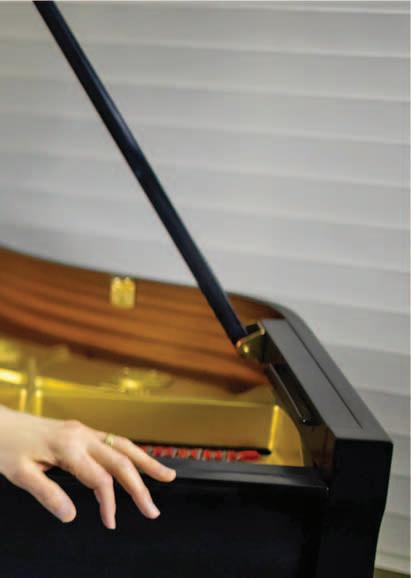







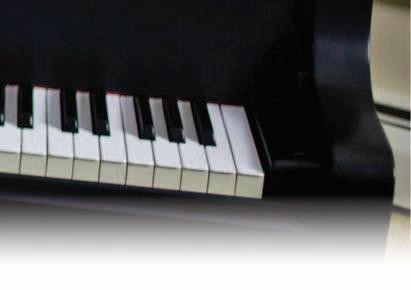










When my friend called, she was upset, confused and resigned.
Through her front window, she had just witnessed a crime. She was the victim, for the fifth time in the last year.
She lives alone in an old-ish house on a quiet suburban street. She’s in her 70s. She has had three major surgeries in the last year. Going out for any reason, especially shopping, is getting to be a burden for her.

By Bob Levey
So she orders most of her basic stuff online. It’s delivered to her front porch.
Where it is often promptly stolen.
This 21st-century phenomenon is called porch piracy. Thieves follow delivery vans as they make their deliveries. As soon as the van is gone, and no police are in sight, the pirates grab the goods and disappear.
According to a federal government study, porch piracy is responsible for $1.5 billion in losses each year in the United States. Senior citizens are disproportionately the victims.
Why? For the same reasons they are often victims of other crimes. They are vulnerable and confusable.
So many older people are reluctant to cry ouch, especially if they live alone. If they report a porch piracy, they worry that they’ll be blacklisted from future deliveries (they won’t be).
They sometimes get discombobulated about the items that were heisted. If FedEx says they were delivered, but they’re not outside the front door, did I really order them, or is my mind playing tricks on me?
They’ve had their share of senior moments. Perhaps this is yet another.
Of course, pirates know all this and bank on it. Even so, a porch pirate has to be very bold to strike when a victim is at home.
Perhaps the owner has mounted some electronic security gizmo that can snap a picture of him. Yet if he covers his face — most porch pirates do — he can beat this first line of defense. Bingo, he has a box of steaks or a raft of expensive clothes that he didn’t have three minutes earlier.
How should senior victims of porch piracy fight back?
Experienced police officers say the best medicine is to fetch a delivery from the porch as soon as it’s dropped off.
Of course, that isn’t always possible, because the homeowner might be busy elsewhere in the house, or out back in the garden, or off on a trip. Pirates can strike and be gone in mere seconds.
But many pirates are repeat offenders, police say. If they’ve hit a particular porch once, successfully, they’ll often hit it again. The last thing a senior citizen needs, especially if he or she is disabled, is not to be able to count on deliveries of important
drugs or medical supplies. Yes, retailers will usually refund the purchase price of stolen goods. But that doesn’t help a senior who was counting on a lifeline item on a particular day.
Being an ornery sort, I can’t help but recommend a saucy countermeasure I first heard about many years ago.
A man who lived in a highrise apartment subscribed to a newspaper. It was duly delivered each day before dawn. It was duly stolen, day after day.
The man did not want to get up at 5 a.m. every morning to get a jump ahead of the thief. So he played the Ingenious Card.




The Greens at Hammonds Lane: 410-636-1141
Park View at Furnace Branch: 410-761-4150
Park View at Severna Park: 410-544-3411
Ednor Apartments I: 410-243-0180
Ednor Apartments II: 410-243-4301
The Greens at Irvington Mews: 410-644-4487
The Greens at Irvington Mews II: 410-817-1764
Park Heights Place: 410-578-3445
Park View at Ashland Terrace: 410-276-6440
Park View at Coldspring: 410-542-4400
Cove Point Apartments I: 410-288-2344
Cove Point Apartments II: 410-288-1660
Evergreen Senior Apartments: 410-780-4888
The Greens at English Consul: 410-789-3000
The Greens at Liberty Road: 410-655-1100
The Greens at Logan Field: 410-288-2000
The Greens at Rolling Road: 410-744-9988
Park View at Catonsville: 410-719-9464
Park View at Dundalk: 410-288-5483 •
55 & Better
Park View at Fullerton: 410-663-0665
Park View at Miramar Landing: 410-391-8375
Park View at Randallstown: 410-655-5673
Park View at Rosedale: 410-866-1886
Park View at Taylor: 410-663-0363
Park View at Towson: 410-828-7185
Park View at Woodlawn: 410-281-1120
Park View at Easton: 410-770-3070
Park View at Bel Air: 410-893-0064
Park View at Box Hill: 410-515-6115
Park View at Colonial Landing: 410-796-4399
Park View at Columbia: 410-381-1118
Park View at Ellicott City: 410-203-9501
Park View at Ellicott City II: 410-203-2096
Park View at Emerson: 301-483-3322
Park View at Snowden River: 410-290-0384
Park View at Bladensburg: 301-699-9785 • 55 & Better
Park View at Laurel: 301-490-1526
Park View at Laurel II: 301-490-9730





Across
1. Dog tag data
5. Sheet of stamps
9. Donned
13. Billiards bounce
14. North Carolina university whose mascot is “The Phoenix”
15. Command to military marchers
16. The Western part of Hispaniola
17. “Now you know the ___ of the story”
18. “It’s ___” (excitement at Broadway or the ballpark)
19. Response to adored dancewear
22. Debt vowels, scrambled
23. Web portal with HQ in Redmond, WA
24. Only referenced Yogi Bear
33. Infuriates
34. Emmy-winning actress, Ward
35. Like some trail surfaces
36. Plumber’s vehicle
37. ___ pal (lady friend)
38. Dir. from Annapolis to West Point
39. Where you can gamble on most cruise ships
42. Product of the liver
44. Role in Young Frankenstein
45. Tours the fashion dairy
48. It is covertly in both focaccia and ciabatta breads
49. Part Steven and Stephen both agree on
50. Rail car full of Marlboros
59. Restaurant chain that used a kangaroo in its commercials in the ‘70’s
60. About 2.2 lbs. (on Earth)
61. Features of all Great Wolf Lodges
62. It’s just a river in Egypt
63. Vigorous spirit
64. Further under the weather
65. Bag with a shoulder strap
66. Unit of force
67. Applies a tip to the bill
2. Like Death Valley
3. Proposals to the board
4. Actor Estevez
5. Peeping Tom, perhaps
6. Downwind, nautically
7. All up in someone’s business
8. Put a mummy in long-term storage
9. Additional unnamed items
10. Most visited Hawaiian island
11. Letters in both UNDERLIT and OVERLIT
12. “___, Brute?”
13. When doubled (or tripled), a dance
20. Most innings have six
21. GI entertainment
24. Mariah Carey and Beyonce
25. About to blow your top
26. Unable to float
27. Artistic transition
28. Unit of fire severity
29. Ivy foe of UPenn
30. Drums Ringo played in You’re Going to Lose That Girl
31. Live (as a TV show)
32. Those expressing Yiddish angst
40. One who checked out of the Big House early
41. Ending for fan- and lun-
43. Response to “are not”
44. Like a beer from the cooler
46. What you may get if your password is PASSWORD
47. Dream world
50. Darken car windows
51. Endpoint of the B&O
52. “Like a ___ out of the blue”
53. Greasy
54. Extended family
55. Fine-tune
56. You may do it to your own nose or someone else’s hand
57. Cheers for the matador
58. Open-Source Robotics (briefly)
From page 34
to visit what is now the Smithsonian American Art Museum. An exhibition of work by Romaine Brooks piqued her interest in the American painter, who worked mostly in Paris and Capri.
“She was painting women in a way that I was painting with words,” Secrest said. “Brooks had just died and left behind a memoir. I thought, ‘This is the subject for a book.’”
Doubleday agreed and published Between Me and Life: A Biography of Romaine Brooks in 1975, just shy of Secrest’s 45th birthday.
Her biographies of Berenson, Clark, Dalí and Frank Lloyd Wright followed. Her 1995 biography of Leonard Bernstein led her to Stephen Sondheim.
“After the Bernstein biography, Stephen’s friend, playwright Arthur Laurents, encouraged [Sondheim] to work with me on his biography. He said, ‘She’s very good; you should do it,’” Secrest recalled.
Once a reluctant subject, Sondheim sat for 50 hours of interviews with Secrest.
When the book was completed, she rushed to New York with an advance copy for the composer. Secrest handed the book to Sondheim and said, “Steve, here’s your book.”
“With his rapier wit, he joked, ‘Today it’s my book. Yesterday it was her book. She must have had a bad review.’ But he genuinely liked the book,” Secrest remembered.
Sondheim introduced her to Richard Rodgers’ daughter, Mary.
“She asked me to ‘do a biography of Daddy.’ I promised I would, after the Sondheim book,” she said. Those biographies spanned a decade of Secrest’s life.
“I spent 10 years in musical theater,” said Secrest, who is married to composer Thomas Beveridge, founder and artistic director of the New Dominion Chorale in McLean, Virginia. The couple just celebrated their 50th wedding anniversary.
Looking back at her long career as a biographer, Secrest is pleased to have spent the past 50 years writing about creative people.
“I don’t think of myself as a creative person, but I’m infinitely fascinated by the process itself.”
In her 2007 memoir Shoot the Widow,
From page 35
One morning, before roosters crowed, the paper was delivered. The man ran a string under his front door.
On the outside end of it was a hook, to which he attached the paper. On the inside was another hook, attached to a stack of pots and pans.
As soon as the thief yanked on that day’s about-to-be-stolen paper, there was a huge, metallic crash. The thief never returned.
By Rick Detorie



Secrest turned her focus to her own process of writing biographies.
At 95, she is now contemplating a more personal memoir about her life.
With centenarians on both sides of her family, Secrest is grateful for her longevity and clarity of mind.
“I have so many ideas for books,” she said. “I hope to have five more years to keep doing what I love.”
This trick would work against porch pirates only if there’s enough time to attach a booby trap. But how satisfying it would be to scare the living daylights out of a pirate, especially one who had struck before, and who was threatening to shrink the life horizon of a senior citizen.
My friend the five-time pirate victim said she’ll try the hook trick. I can’t wait to hear the results. A sharp clatter of a few saucepans might teach her porch pirate a lesson that he has long deserved.
Bob Levey is a national award-winning columnist
16
This masterclass, taught by Olney Theatre Center’s director of music Chris Youstra, highlights some of the motifs and inspirations behind Jerry Herman’s score for Hello, Dolly! The class takes place on Sun., Nov. 16 from 4:30 to 5:30 p.m. at the Roberts Mainstage, 2001 Olney-Sandy Spring Rd., Olney, MD. Tickets are $25 or $20 for members. For more information and tickets, visit olneytheatre.org/education/masterclasses. Hello, Dolly! runs from Nov. 6 through Jan. 4. For more details, visit olneytheatre.org.
Nov. 16
Hear performances of piano works by Beethoven, Chopin, Mendelssohn, Scriabin, Shostakovich and Kapustin at 2 p.m. on Sunday, Nov. 16 at a recital at the Hollywood Ballroom, located at 2126 Industrial Parkway in Silver Spring, MD (just off Route 29). Presented by the Adult Music Student Forum, the event is free; refreshments to follow. Reservations not required. The Ballroom’s regular dance instruction and social dance follow their usual Sunday night schedule, from 7 to 11 p.m. for $20/person. For more information, visit hollywoodballroomdc.com.
The Beacon prints classified advertising under the following headings: Business & Employment Opportunities; Caregivers; Computer Services; Entertainment; For Sale; For Sale/Rent: Real Estate; Free; Health; Home/ Handyman Services; Miscellaneous; Obituaries; Personals; Personal Services; Vacation Opportunities; and Wanted. For submission guidelines and deadlines, see the box on page 39.
CAVEAT EMPTOR!
The Beacon does not knowingly accept obscene, offensive, harmful, or fraudulent advertising. However, we do not investigate any advertisers or their products and cannot accept responsibility for the integrity of either. Respondents to classified advertising should always use caution and their best judgment.
EMPLOYMENT & REAL ESTATE ADS:
We will not knowingly or intentionally accept advertising in violation of federal, state, and local laws prohibiting discrimination based on race, color, national origin, sex, familial status or handicap in connection with employment or the sale or rental of real estate.
RETIRED ACCOUNTING PROFESSIONAL seeks part-time employment. Over 10 yrs experience in bookkeeping, AR, AP, GL, BR, tax IRS and state returns, audit preparation. Live in Silver Spring MD (870) 413-2018.
A CARE AGENCY - Been in business for more than 10 years. Experienced nurses, CNAs, GNAs. Any hours you need. Flat rate for live-in. Duties include cooking, housekeeping, bathing, errands, etc. Tel: 667-231-8235.
A HOME HEALTHCARE- Experienced nurses, CNA, GNA are available 24/7. Cooking, companionship, personal care, housekeeping, driving. Full/Part-time or live-in care. 15 years’ experience. 240-533-6599.
COMPUTERS, TELEVISIONS, CELL
PHONE Help For Seniors. We offer patient and thorough help for seniors with all matters of technology. We come to your home. We service MD, VA and DC. Call Senior Tech Pro at 301337-0028. Available 24/7 Ask for Philip.
UP TO $15,000.00 OF GUARANTEED
LIFE INSURANCE! No medical exam or health questions. Cash to help pay funeral and other final expenses. Call Physicians Life Insurance Company - 866-212-1092 or visit www.Life55plus.info/beacon
WESLEY FINANCIAL GROUP, LLC Timeshare Cancellation Experts. Over $50,000,000 in timeshare debt and fees cancelled in 2019. Get free informational package and learn how to get rid of your timeshare! Free consultations. Over 450 positive reviews. Call 855-626-8703.
CEMETERY PLOTS Ft. Lincoln Cemetery. Brentwood, MD. 4 plots Section K-B Lot 30 Sites 1-4. Single depth. Monument privilege. Number of plots and price negotiable. Contact Steve Frank. stevefrank22@verizon.net. 301-490-5898. NEW WINDOWS FROM WINDOW NATION. Special money saving offer zero down, zero payments, zero interest for TWO years AND buy 2 windows and get 2 FREE! Offer is valid for select models. Labor not included. Other restrictions apply. Call Window Nation today! 855-909-2278.
GIL PAINTING CO. INC. Free estimates call (301) 370-9940. www.gilpainting.com Interior & exterior painting, Drywall repair, Plaster repair, Roofing, Roof repair. MHIC# 150105. NO MORE CLEANING OUT GUTTERS. Guaranteed! LeafFilter is the most advanced gutter protection for your home, backed by a noclog guarantee and lifetime transferable warranty. Call today 1-855-977-6078 to schedule a FREE inspection and no obligation estimate. Plus get 20% off! Seniors and military save an additional 10%. Restrictions apply, see representative for warranty and offer details.
DIRECTV - All your entertainment. Nothing on your roof! Sign up for Directv and get your first three months of Max, Paramount+, Showtime, Starz, MGM+ and Cinemax included. Choice package $84.99/mo. Some restrictions apply. Call DIRECTV 1-888-572-4953.
PARKLAWN CEMETERY. 4 desirable burial sites on sunny hill in block B. Will divide into pairs. Current price $10.5k/site. Will sell for $7.5k/site obo. Call Susan at 240-401-6236.
NATIONAL MEMORIAL PARK, two burial lots desirable location. Next to each other block AA. One lot valued at $9,945. selling both for $12,000 or OBO, call Vina at 703-655-2043.
UNIQUE FLOWER DESIGNS (www.aeufd.com/ 301-340-8727) offers - HIGH QUALITY, stunning, LOW COST, flower arrangements from an experienced designer - for delivery, home decoration, and weddings and funerals.
NOW LEASING — Affordable 1-Bedroom Senior Apartment (62+) in Washington, DC. Friendship Area | Immediate Move-In Available. Discover comfortable, affordable living at our 62+ senior apartment community in the heart of Washington, DC’s Friendship neighborhood. 1Bedroom Apartment Home. Starting at $1,384/month (50% AMI). Washer & Dryer in Unit. Residents Pay Electric & Water. Amenities Include: Fitness Center, Yoga Studio, Onsite Hair Salon, Hobby Room, And more! Income Requirements: Minimum Income: $38,161, Maximum Income: $54,150 (per 50% AMI guidelines). Affordable senior living in a vibrant, amenityrich community! Contact us for open house dates and times. Call Today: 301-453-4655.
I AM A LICENSED CERTIFIED NURSING ASSISTANT with 10 years of experience. I am looking for a full-time job. I will provide health care services, daily grooming, personal hygiene, light housekeeping and companionship. Please call Bola 301-996-5180.
CALL ANTHONY AT 410-739-3318. RedZone Fitness Studio voted one of the top 10 gyms in Maryland. With over 16 years of successful personal training and rehab experience. We come to you and get results. Ask about our holiday specials.
DISCOVER NORTH STAR NAVIGATORS: Your Trusted Partner in Elder Support Services. At North Star Navigators, we are dedicated to making a positive impact in the lives of our aging population. We understand the challenges that come with aging and are driven by a personal quest to enhance the well-being of seniors. Our telehealth services include: - Comprehensive Assessments & Recommendations - Golden Years PlanningHealthy Ship (Membership). Get Ready to Set Sail with North Star Navigators! Where YOU remain the Captain, and our Stars guide the way. Visit NorthStarNavigators.net or call 833-735-1983 for more information. Your Trusted Team: Anchored in Compassion, Driven by Passion.
DENTAL INSURANCE from Physicians Mutual Insurance Company. Coverage for 400 plus procedures. Real dental insurance - NOT just a discount plan. Do not wait! Call now! Get your FREE Dental Information Kit with all the details! 1-844366-1003 www.dental50plus.com/320 #6258
MOBILEHELP, America’s Premier Mobile Medical Alert System. Whether You’re Home or Away. For Safety and Peace of Mind. No Long Term Contracts! Free Brochure! Call Today! 1240-650-9189.
PORTABLE OXYGEN CONCENTRATOR
May Be Covered by Medicare! Reclaim independence and mobility with the compact design and long-lasting battery of Inogen One. Free information kit! Call 855-851-0949.
SLOWING DOWN AFTER 44 YEARS of contracting. Small to medium jobs mainly residential but will do some commercial also. Will work all over the DC MD and VA areas. $45.00 from arrival on job. Andy 703-906-5429.
SETTLING AN ESTATE? Downsizing Specialists, LLC can help with the overwhelm. Our proven process helps you thoughtfully decide what to keep, gift, sell, donate, or discard with compassion and clarity at every step. Services include estate liquidation, downsizing, estate sales, storage unit clean-outs, junk removal. We buy estates, vehicles, & houses. Free estimates. Local. Family Owned. Licensed. Insured. Better Business Bureau A+ Certified Call/Text Philip 301-219-3600 DownsizingSpecialists.com
THE BATHROOM OF YOUR DREAMS in as little as 1 day. Limited Time Offer - $1000 off or No Payments and No Interest for 18 months for customers who qualify. BCI Bath & Shower. Many options available. Quality materials & professional installation. Senior & Military Discounts Available. Call Today! 1-855-653-0087.
DON’T LET THE STAIRS LIMIT YOUR MOBILITY! Discover the ideal solution for anyone who struggles on the stairs, is concerned about a fall or wants to regain access to their entire home. Call AmeriGlide today! 1-866-3655170.
SAFE STEP. North America’s #1 Walk-In Tub. Comprehensive lifetime warranty. Top-of-theline installation and service. Now featuring our FREE shower package and $1600 Off for a limited time! Call today! Financing available. Call Safe Step 1-866-478-2363.
AMERICAN RESIDENTIAL HEATING & COOLING. As temps outside start to climb, the season for savings is now. $49 cooling or heating system tune up. Save up to $2000 on a new heating and cooling system (restrictions apply.) FREE estimates. Many payment options available. Licensed and insured professionals. Call today 1-877-691-0273.
JACUZZI BATH REMODEL can install a new, custom bath or shower in as little as one day. For a limited time, waiving ALL installation costs! (Additional terms apply. Subject to change and vary by dealer. (Offer ends 9/30/25.) Call 1833-994-0538.
WE ARE IN SEARCH OF DARREN TAYLOR who has previously lived at an address in Baltimore City and whose last known address was Montgomery Drive, Forest Hill, Maryland. Please contact Kathryn at kathimullins@gmail.com.
CONSUMER CELLULAR - the same reliable, nationwide coverage as the largest carriers. No long-term contract, no hidden fees and activation is free. All plans feature unlimited talk and text, starting at just $20/month. For more information, call 1-833-742-1303.
BECOME A PUBLISHED AUTHOR. We want to Read Your Book! Dorrance PublishingTrusted by Authors Since 1920. Book manuscript submissions currently being reviewed. Comprehensive Services: Consultation, Production, Promotion and Distribution. Call for Your Free Author’s Guide 1-833-992-0110 or visit dorranceinfo.com/beacon
ARE YOU OR A LOVED ONE STRUGGLING TO EAT HEALTHY? Work with a personal nutrition coach to improve your health through the foods you eat every day. Even small diet changes can help prevent chronic disease and slow aging. Coaching packages start at $129 and include in-person or online meetings, goal setting and action plans, personalized guidance, and daily check-ins. Gift cards available. Call 703-278-2775.
MEN & LADIES. Licensed HAIR, NAILS, FACIALS. I will come to your home if you live in the Silver Spring zip codes. Reasonable rates concentration mainly in LW. For information and appointments call 7 days. Kim 301-7924936.
I BUY GUNS: Military/Civilian & MILITARY MEMORABILIA. I am a licensed Firearms Dealer and can legally purchase from you. I also buy medals, uniforms & insignia. Tim Frank 301-2010241. historian1975@gmail.com. www.midatlanticmilitaryantiques.com
CASH FOR JEWELRY: Buying jewelry, diamonds, gold, platinum, silver, watches, coins, flatware, etc. Ask for Tom. Call anytime, 301654-8678 (Reg. 883).
WILL BUY MILITARY, WWII, WWI, Civil War memorabilia items. Uniforms, weapons, helmets, photos, war souvenirs, medals, photos or any other items associated with U.S., German, Japanese or other military history. Call Dave (240-464-0958) or email (david.obal63@gmail.com).
COINS, STAMPS, & AUTOGRAPHS WANTED. Paying top prices. Free estimatesWill travel. No collection too large or too small. 50 years of experience. Licensed. Member of major associations. Call Dirk at 301-704-5453 or email dirkkitchin@earthlink.net.
CASH FOR; GOLD JEWELRY, STERLING SILVER, COINS, ETC. GARY ROMAN 301-520-0755.
BOOKSHELVES OVERFLOWING? Boxes of books? Stacks of CDs? We’ll haul them off — FREE pickup, same day service available. Easy declutter, no stress. Call 703-980-7421 or mdbookpickup@gmail.com.
BUYING ESTATES, FULL OR PARTIAL, large or small. Need a house cleared in a hurry, I can get it done. Also buying individual small, pretty things such as Herend, Royal Copenhagen and vintage holiday decorations. Call Susan (301) 785-1129.
PAYING TOP CASH FOR ANTIQUES AND COLLECTIBLES. Housecalls made with prompt, courteous service seven days a week and 25 years of experience! Buying toys, trains, militaria, glassware, advertising merchandise, paper items and much more! Contact Mason or Megan at: 443-306-8816.
WANTED: OLDER VIOLINS, GUITARS, BANJOS, MANDOLINS, UKULELES. Musician/collector will pay cash for older string instruments. Jack (301) 279-2158, leave message & phone number (please speak slowly).
CASH FOR ESTATES; moving, downsizing, single item, or whole estate. I buy a wide range of items. Gary Roman, TheAtticLLC.com. 301520-0755.
CASH FOR RECORDS, CDS AND DVDS. Best price guaranteed. Free appraisals. All types of music {33, 45, 78 & CDs.} Also buying turntables and stereo equipment. Will make house calls with CURBSIDE PICKUPS. Call or text Steve at 301-646-5403.
ALWAYS BUYING SILVER, gold-filled & gold jewelry, Old Silverware & holloware marked “Sterling”, old fountain pens, old tobacco pipes, dental gold, the old stuff... What do you have? Call or text Alex at 571-426-5363. DMW area I’ll pick up!
GET DISH SATELLITE TV + INTERNET! Free Install, Free HD-DVR Upgrade, 80,000 OnDemand Movies, Plus Limited Time Up To $600 In Gift Cards. Call Today! 1-844-560-5837.
Visit the Agricultural History Farm Park this season for cookies and cider, a bake sale, hayrides, barn decorations, music, holiday crafts and farm animals. A free celebration takes place on Sat., Dec. 6 and Sun., Dec. 7 from noon to 5 p.m. at 18400 Muncaster Rd., Derwood, MD. Free parking is available. For more information, email chrissuzich@comcast.net or visit friendsofthefarmpark.org.
The JoGo Project, a band that blends the sound of a traditional big band with jazz rhythms and the spirit of D.C. go-go music, hosts a free holiday concert as part of Strathmore’s Bloom Concert Series. The event takes place on Sat., Dec. 13 from 5 to 6 p.m. at the Good Hope Neighborhood Recreation Center, 14715 Good Hope Rd., Silver Spring, MD. To RSVP, visit bit.ly/freebigbandconcert. For more information, call (301) 581-5100.
“Columbia Air Center — Determined to Fly” tells the story of the nation’s first licensed Black-owned and operated airport, located in Croom, Maryland, from 1940 to 1962. The College Park Aviation Museum, located at 1985 Corporal Frank Scott Dr., College Park, MD, is open Tuesday through Sunday from 10 a.m. to 4 p.m. Admission is $5 or $4 for seniors and $2 for children and students with ID. For more information, call (310) 864-6029 or email collegeparkaviation@pgparks.com.
All classified ads must be submitted and paid for online, via our website, www.thebeaconnewspapers.com/classifieds
Deadlines and Payments: To appear in the next issue, your ad text and payment must be entered by the 5th of the preceding month (for Baltimore and Howard County editions); by the 20th (for Washington edition).
Cost will be based on the number of characters and spaces in your ad:
• $25 for 1-250 • $35 for 251-500. • $50 for 501-750 (maximum length). The website will calculate this amount for you.
Note: Maryland contractors must provide a valid MHIC number.
• Each real estate listing qualifies as one ad. • All ads are subject to publisher’s discretion. Payment will be refunded if unacceptable for any reason.
To place your classified ad, visit www.thebeaconnewspapers.com/classifieds
Hibiscus House
Hill House at Beechfield
Homecrest House
Housing Initiative
Farr Law Firm
Woodleigh Chase/ Erickson











































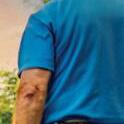





. r.e veev ahetlp re o tel now —g in v g ng winnrddd in n ev r





























c xeehmtor.Feroferbevnehat w -drawsaihfteoropmeuvres d ednaxpeev’etwhawtotnuB
h t a seugoyyaydrevteosn’tI o t tee g wstnemeriuqeyrtilibigil e . gnivirloinegsninniw-drawtat o ep a vaav n av !truoechnts o s twiodnn,assio m t





iamen hct no -po td an es civers
n u iodjndaaehoaoge — smit t natwn’oudohycts a masiihT












o o metlytsefiglninni tnemeriuqeyrtilibigil e
e mp,igninildnaoitpe
a ne er v e,e her ,es
t cefree p h nner iw e blac c e lpoee p r o t teeg,wst



